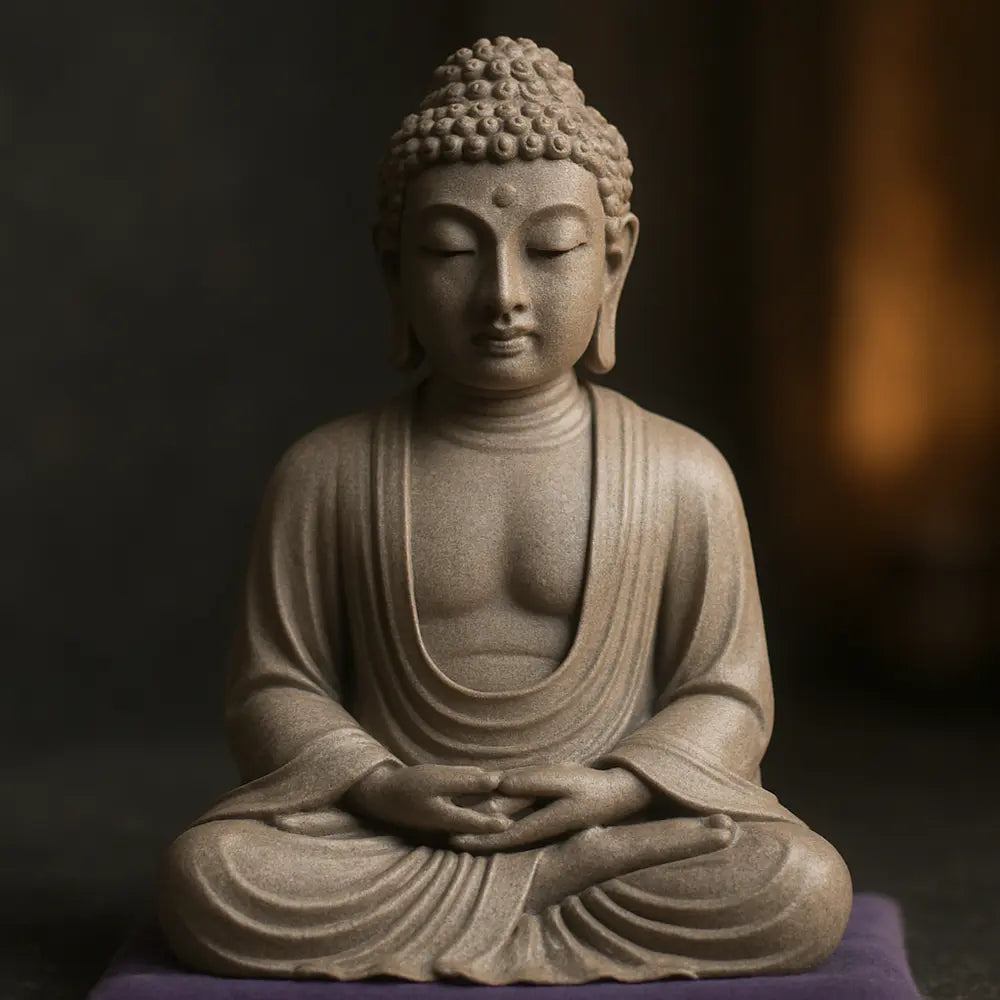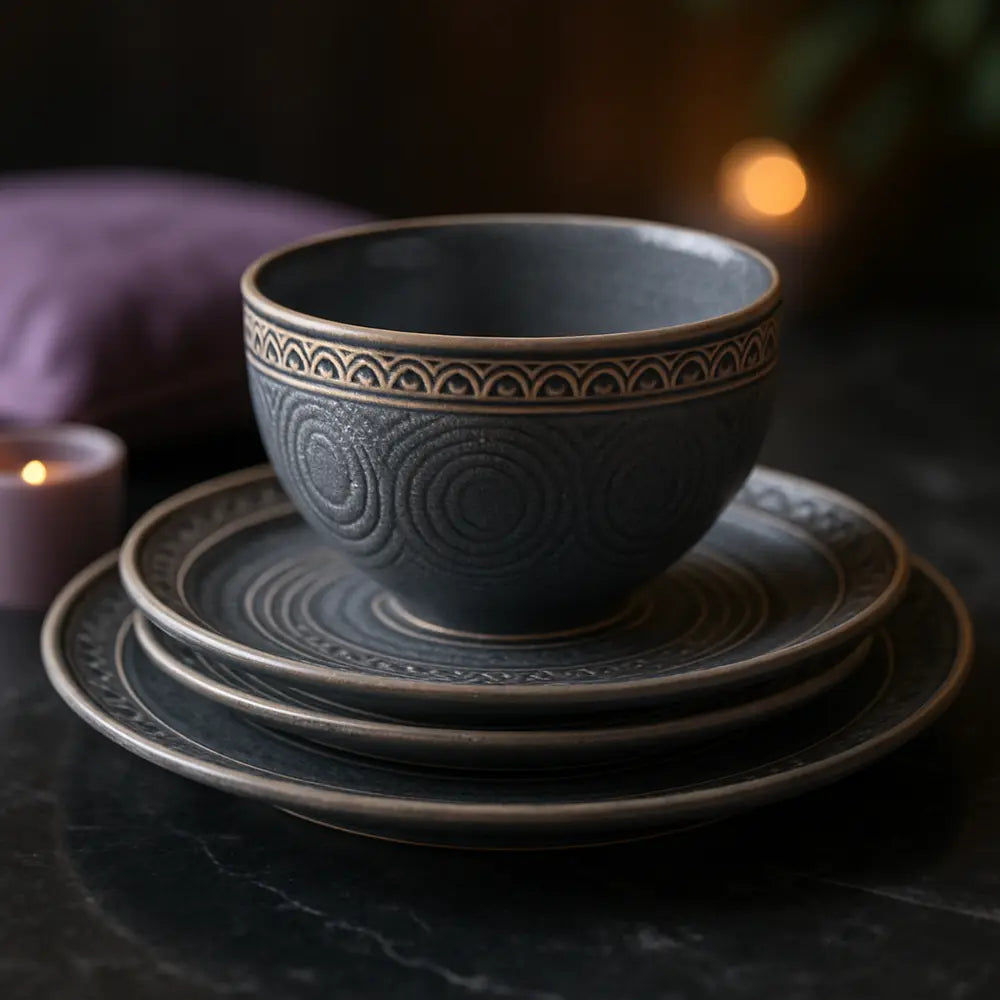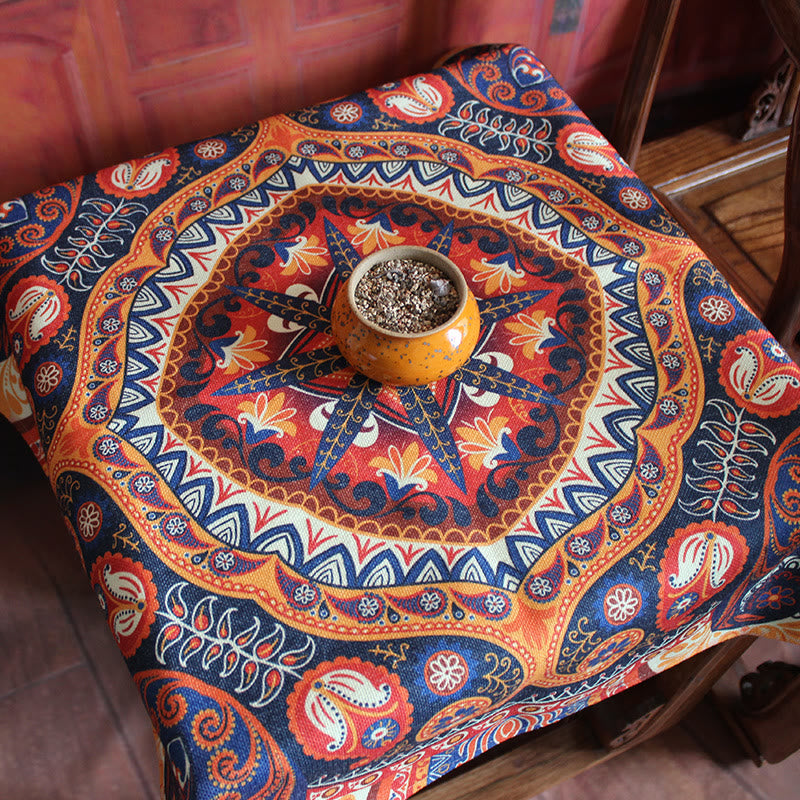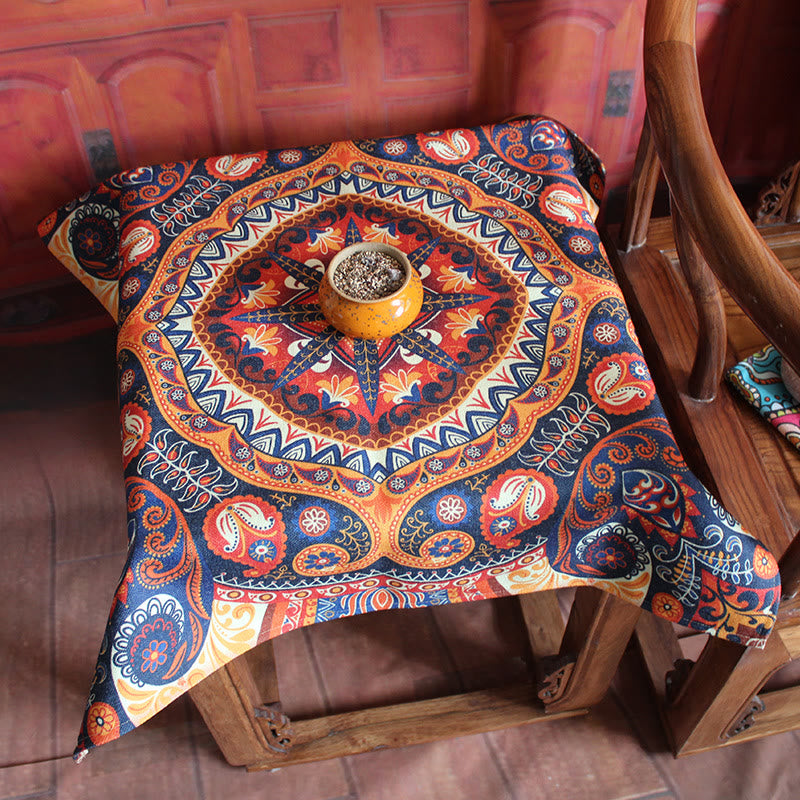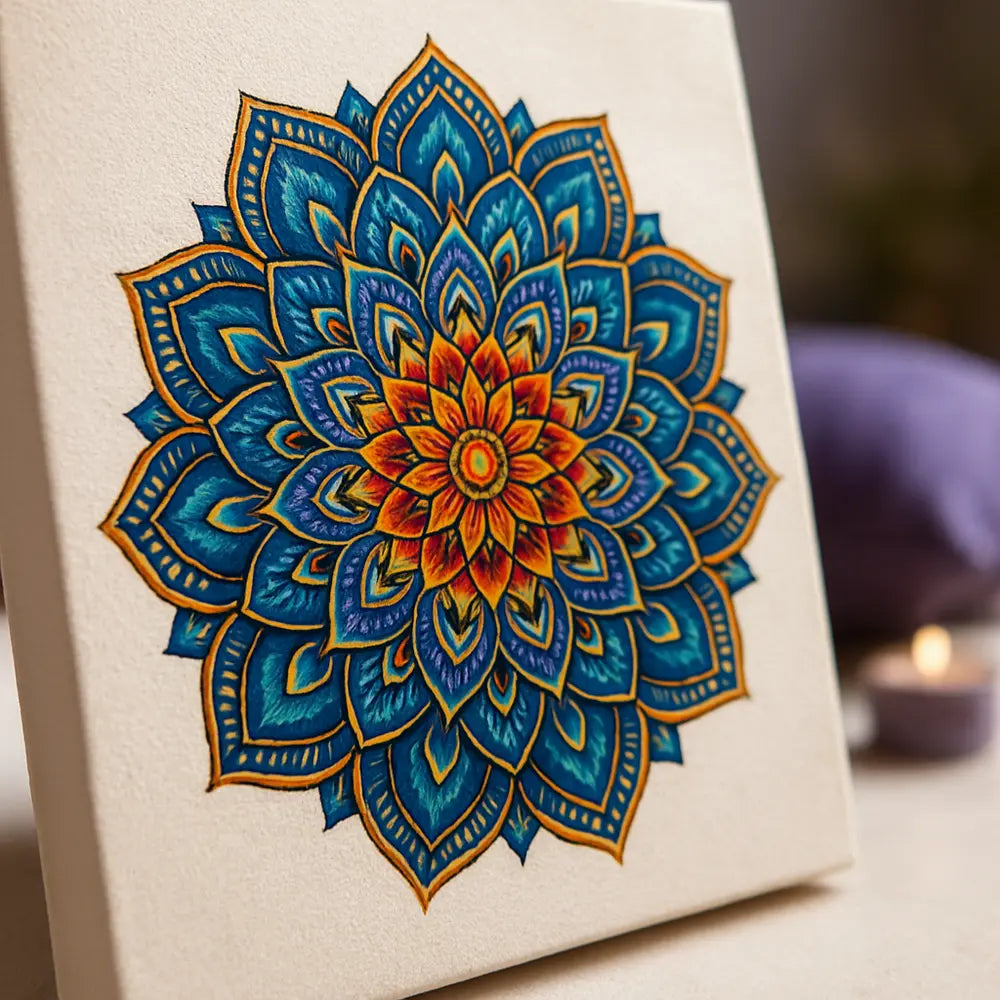
Art mural et tentures
43 produits
Affiche 1 - 24 de 43 produits
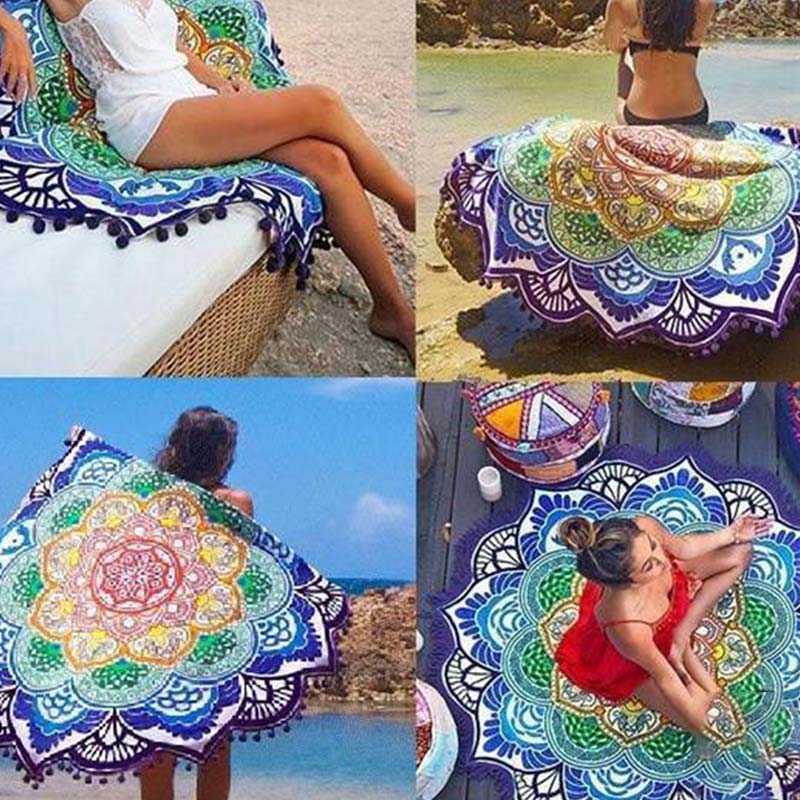

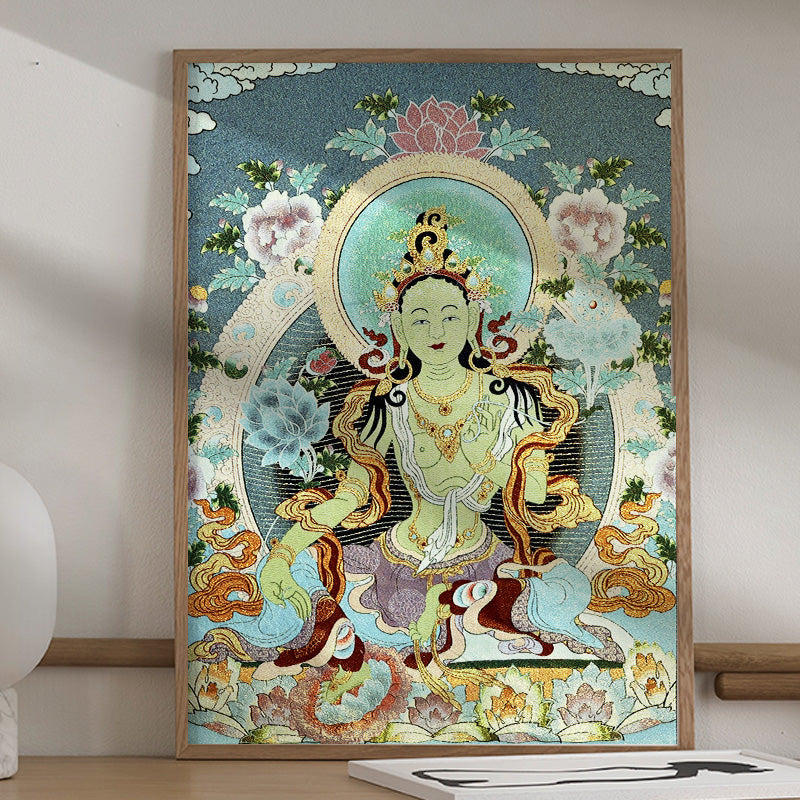
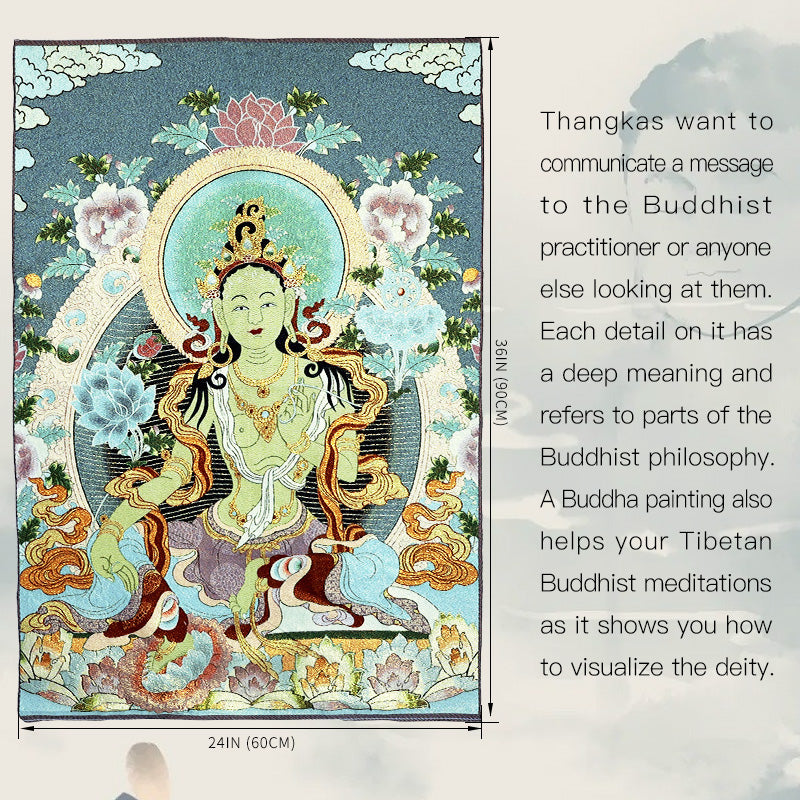
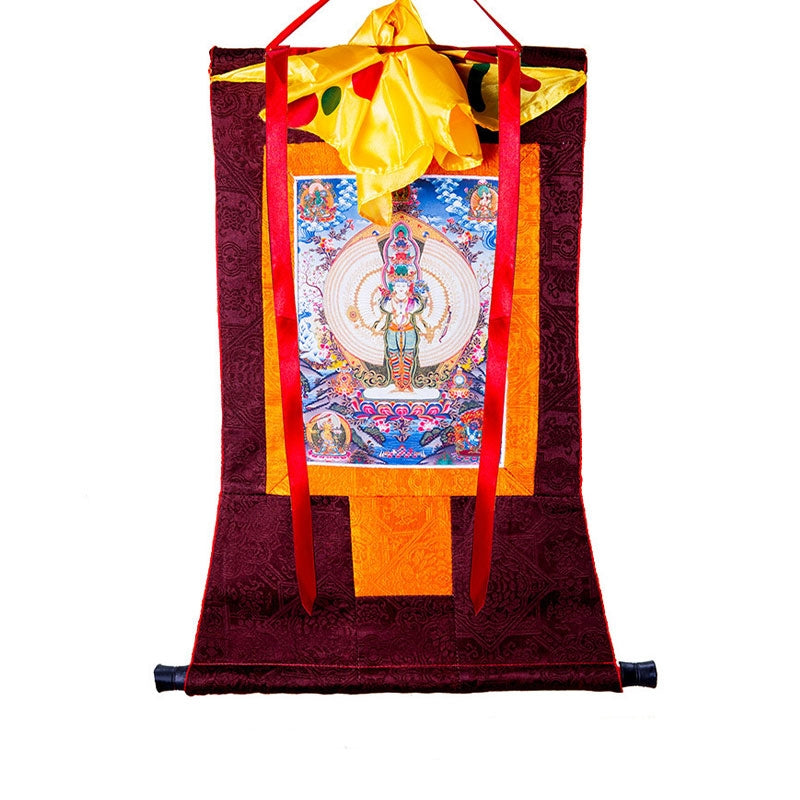
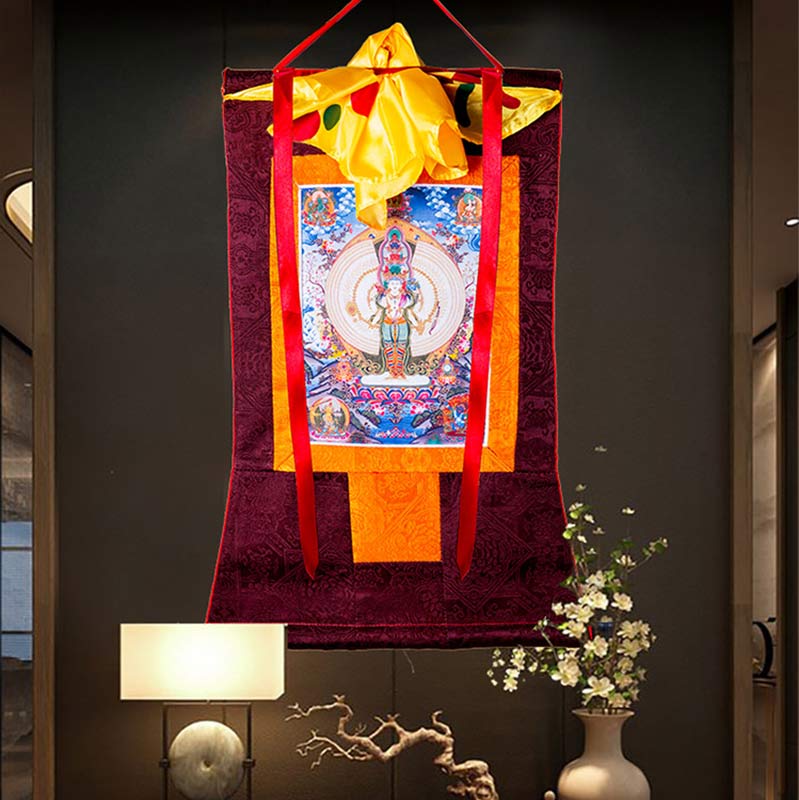
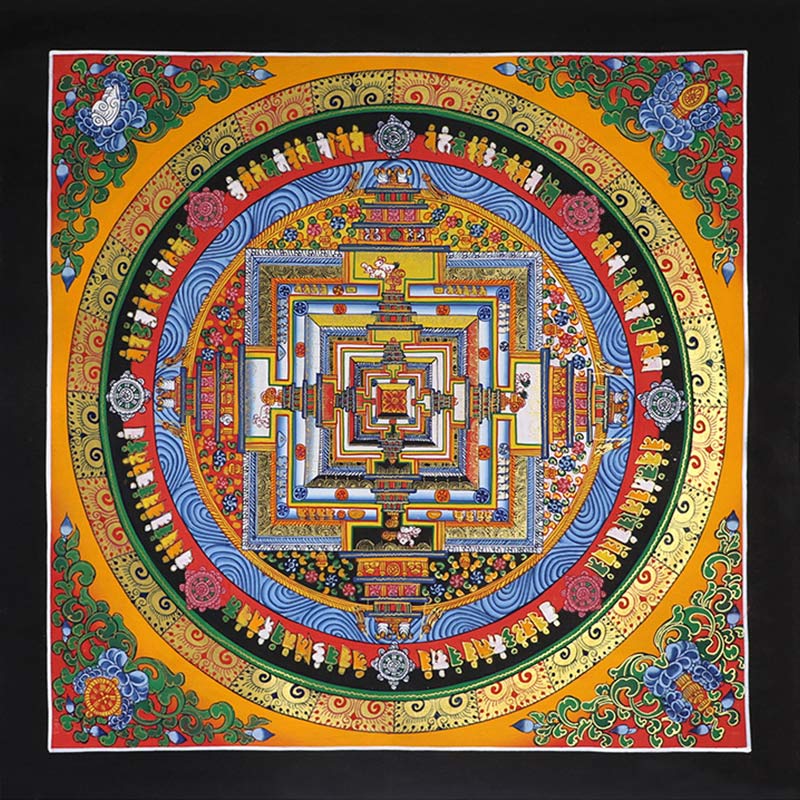
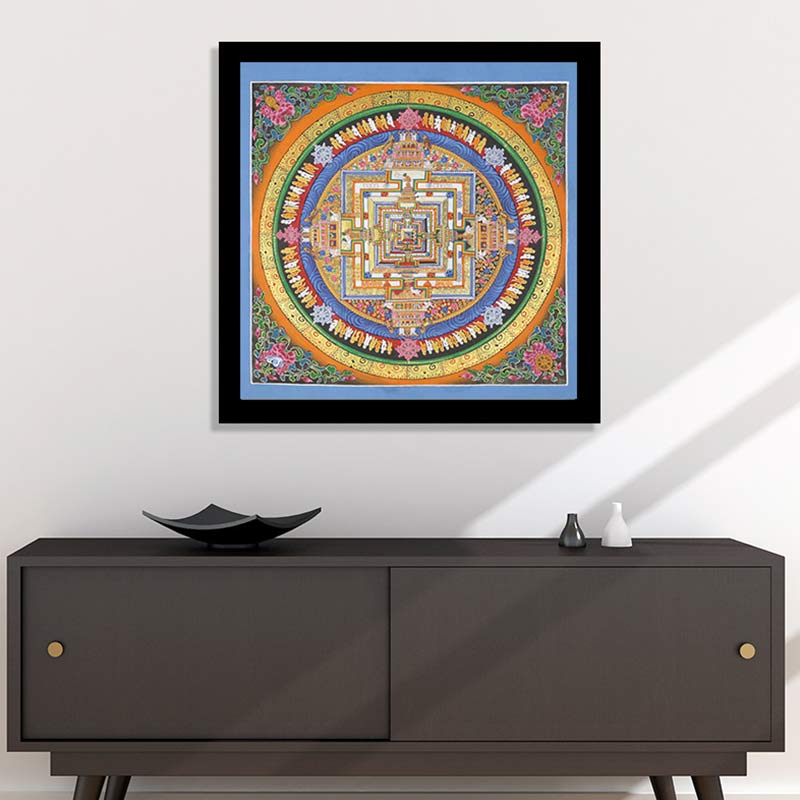
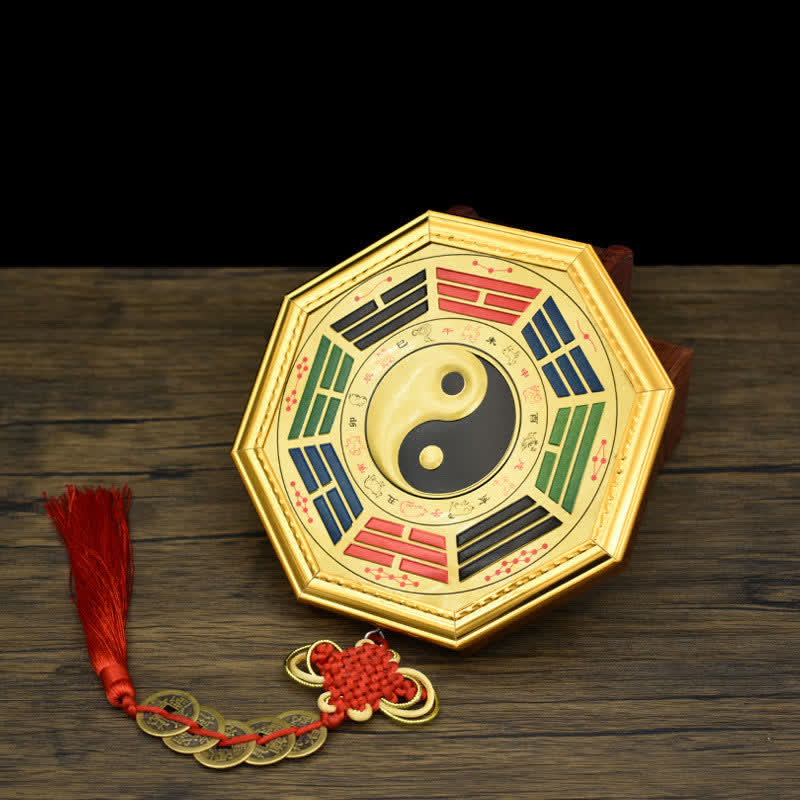

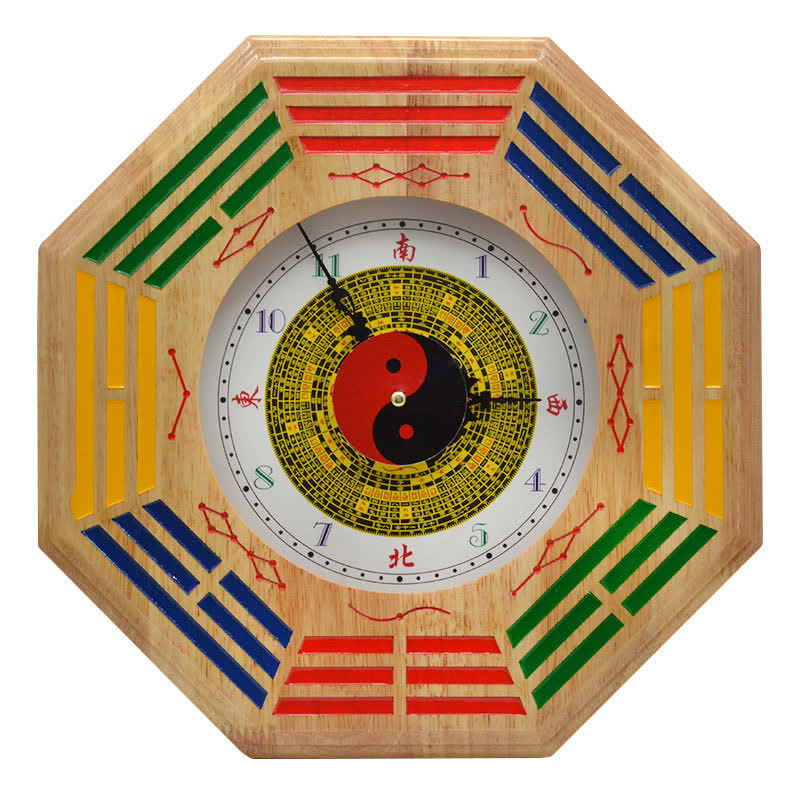

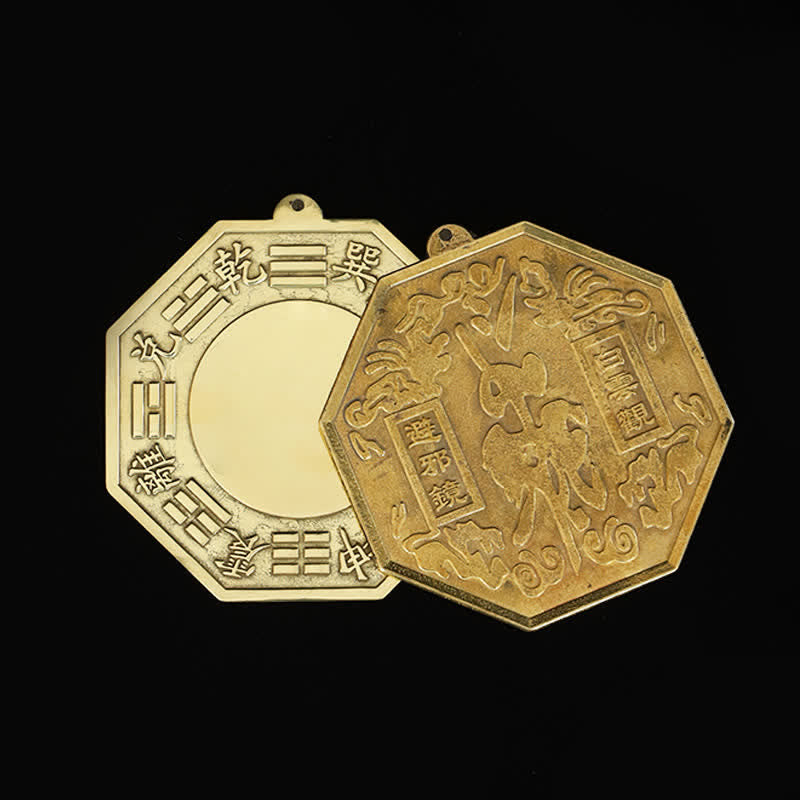
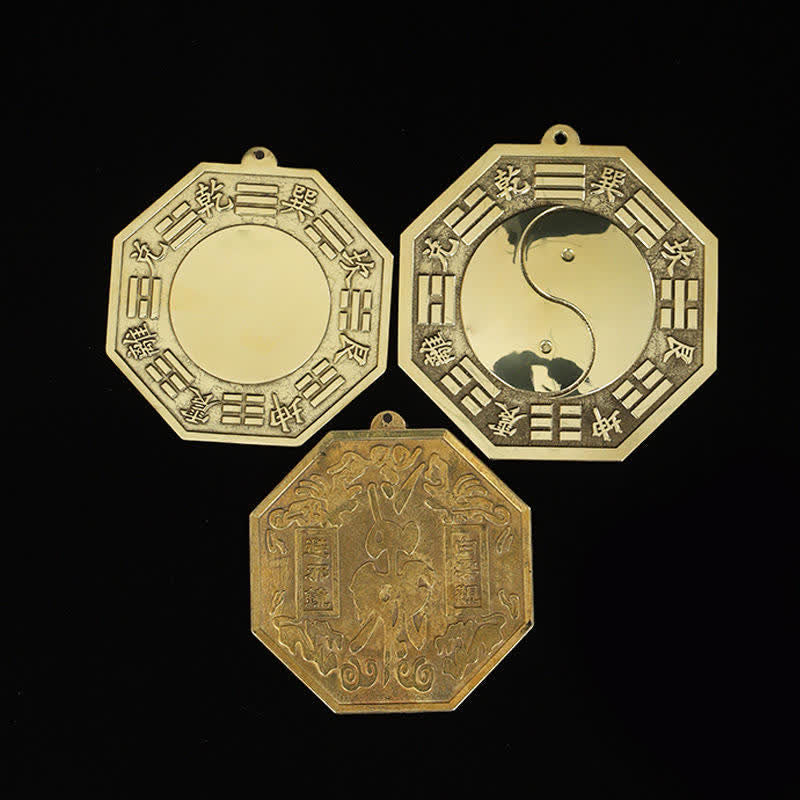
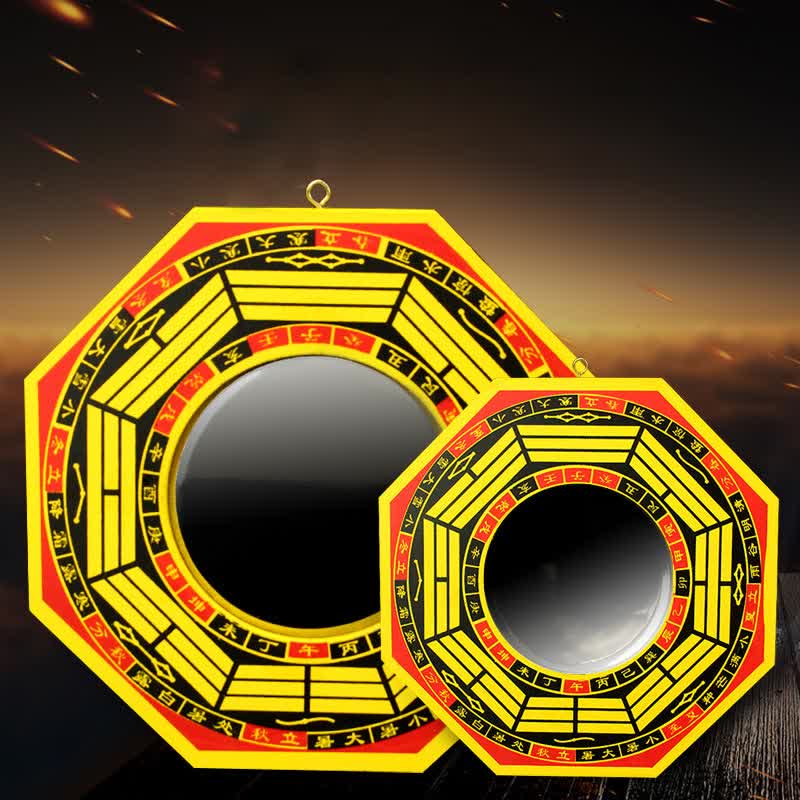
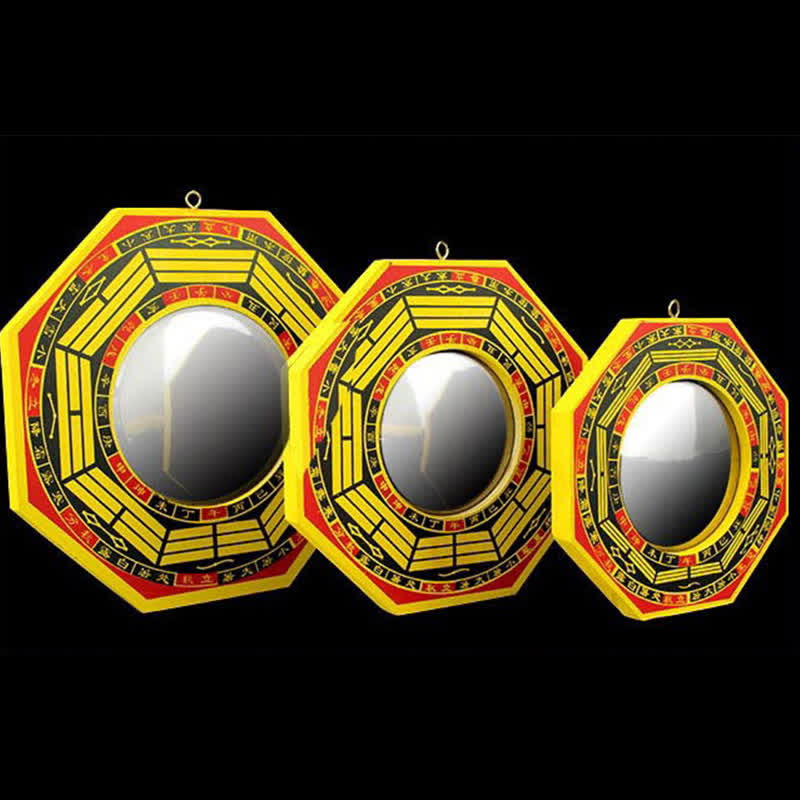
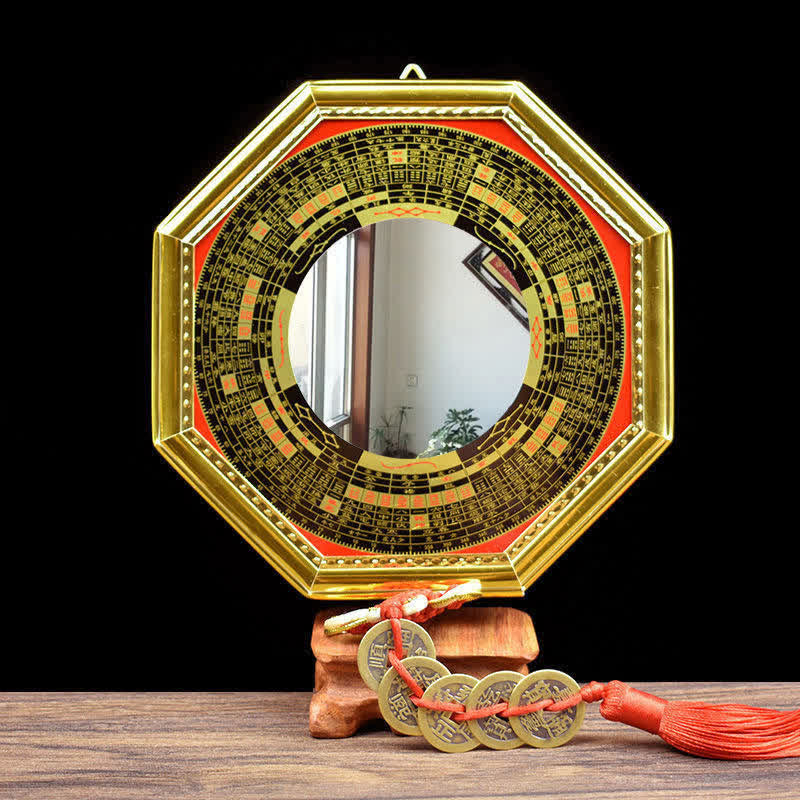
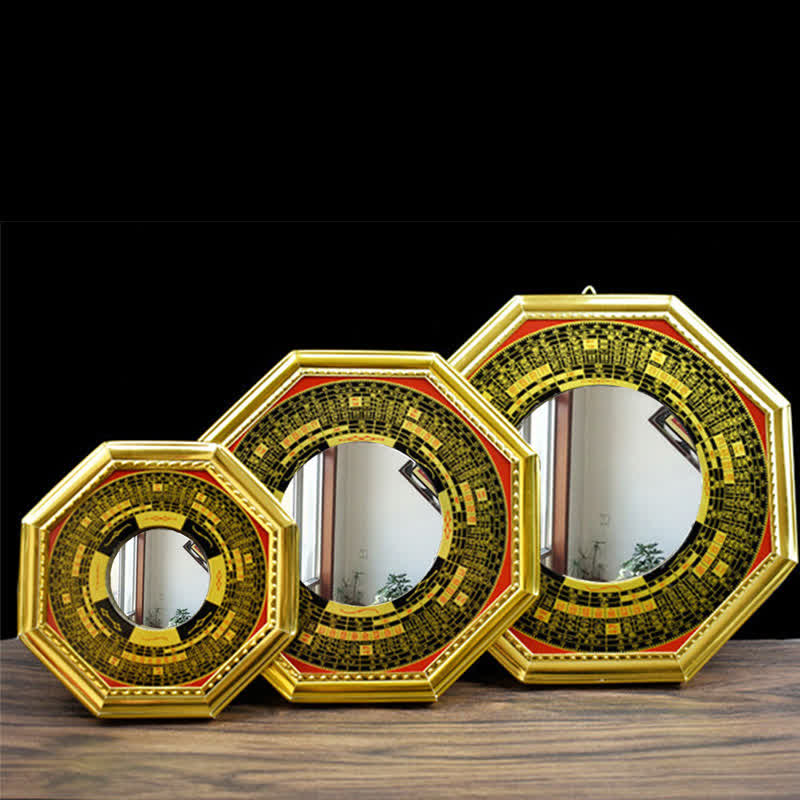

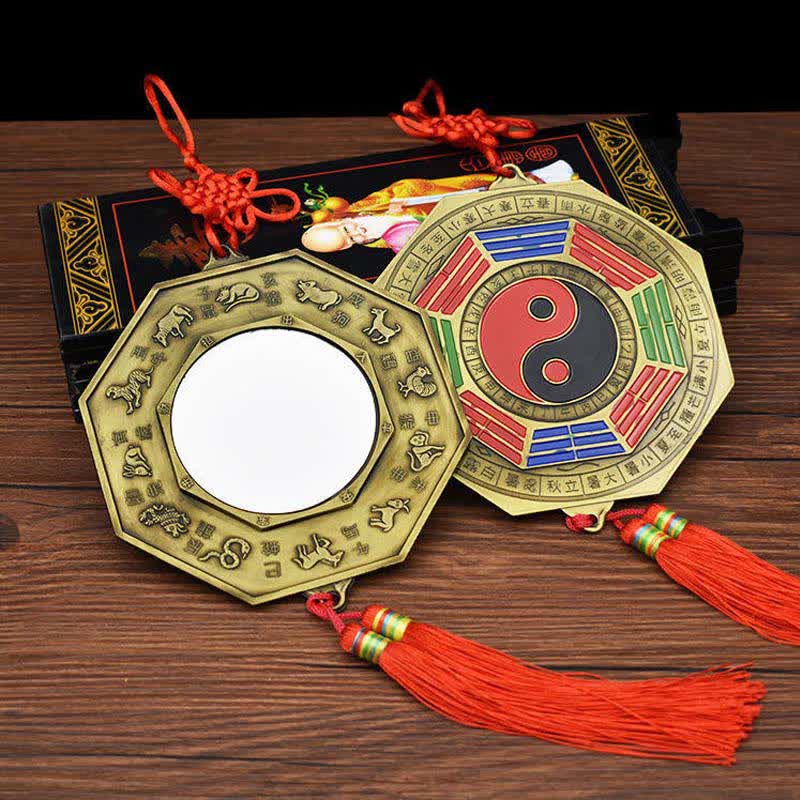
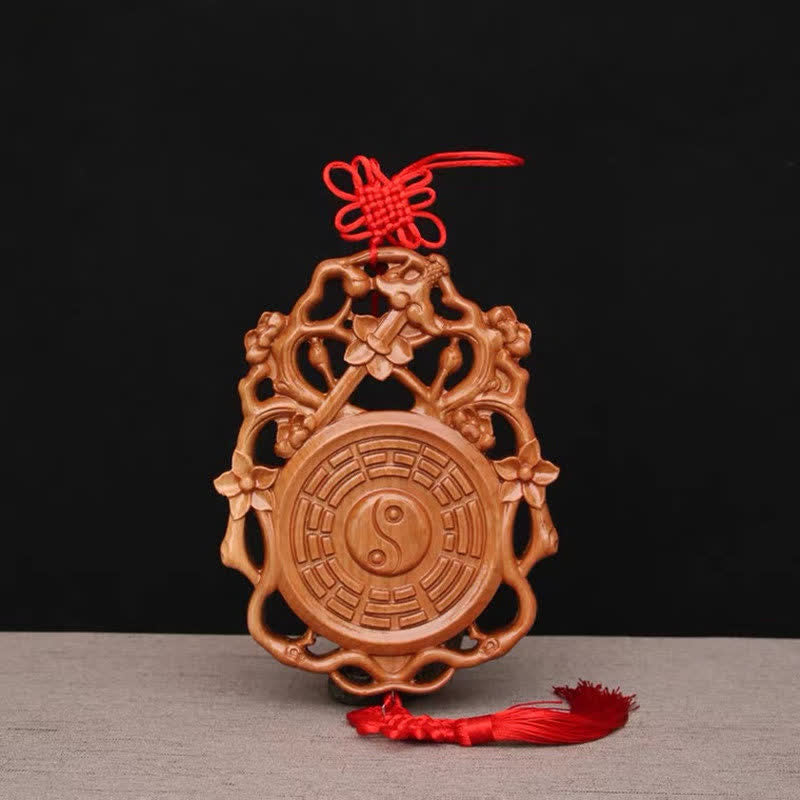
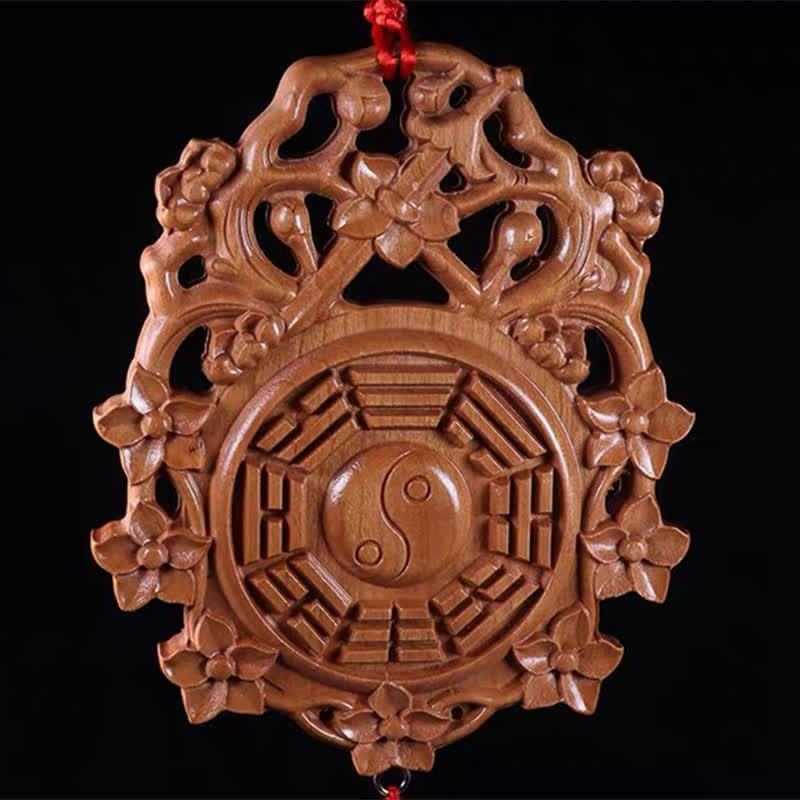
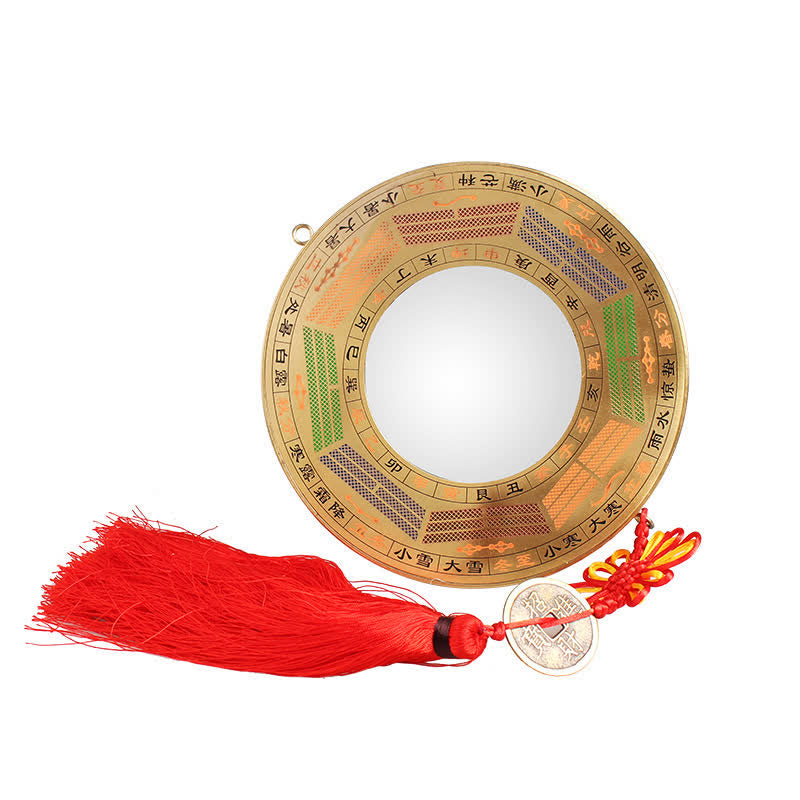

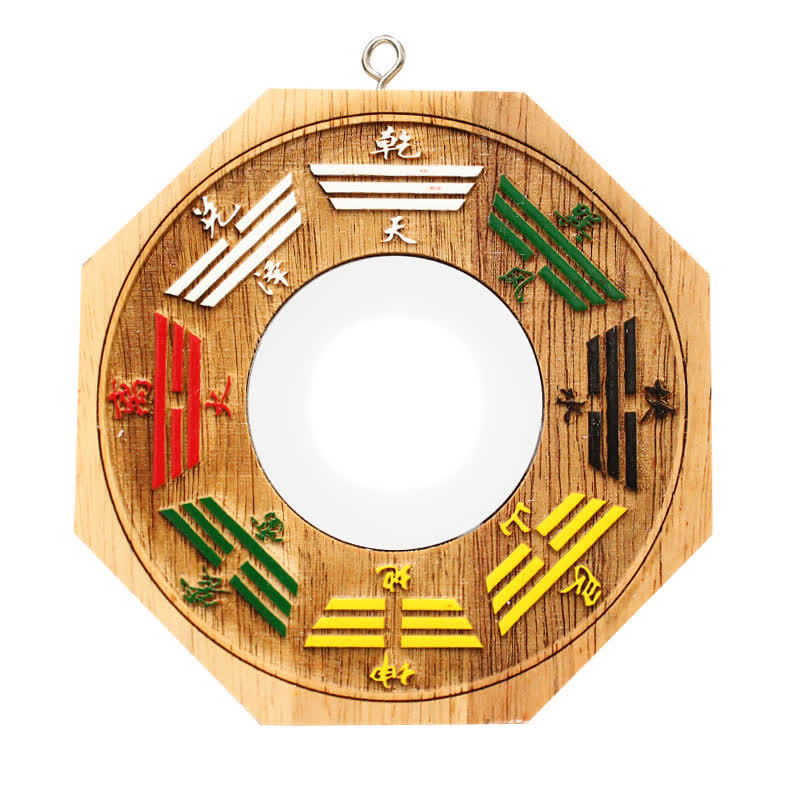
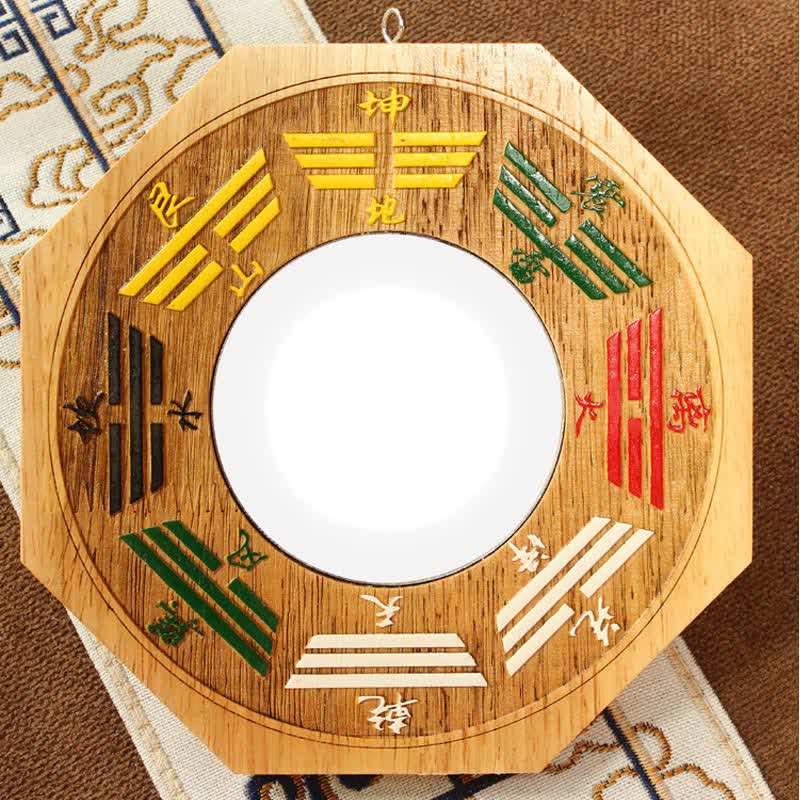
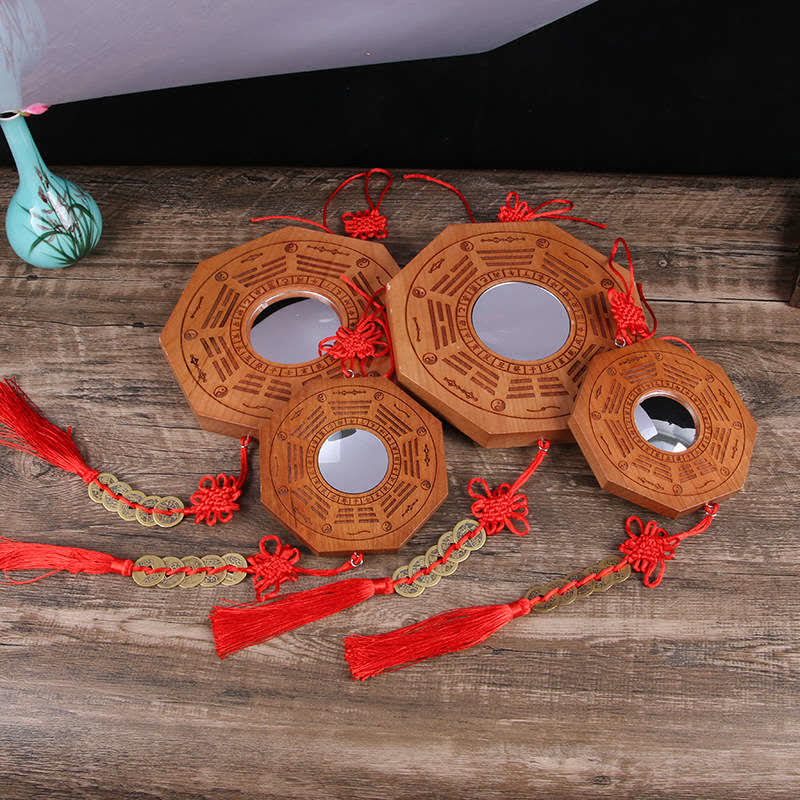
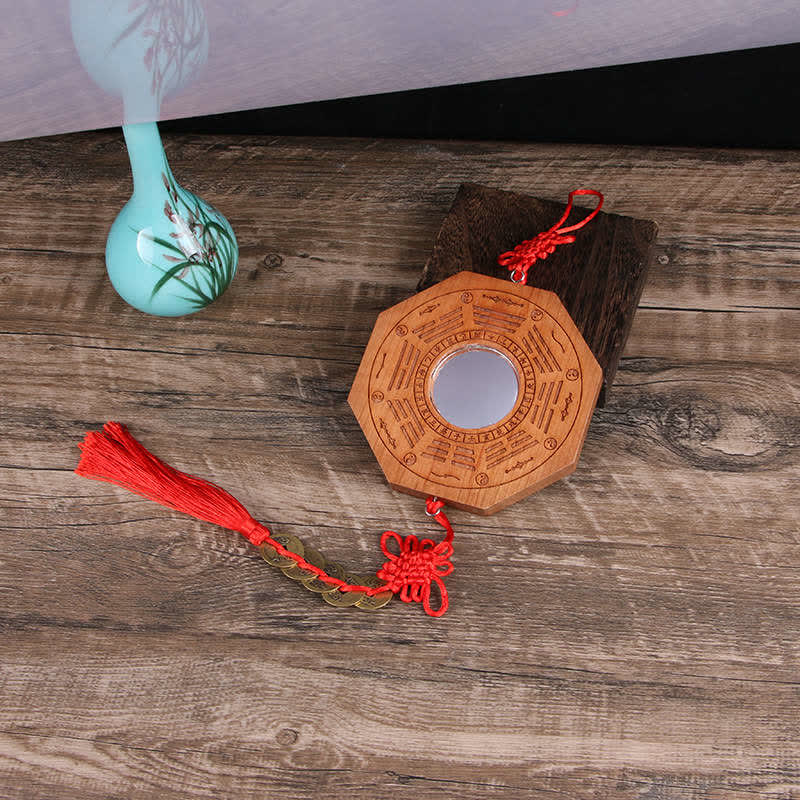
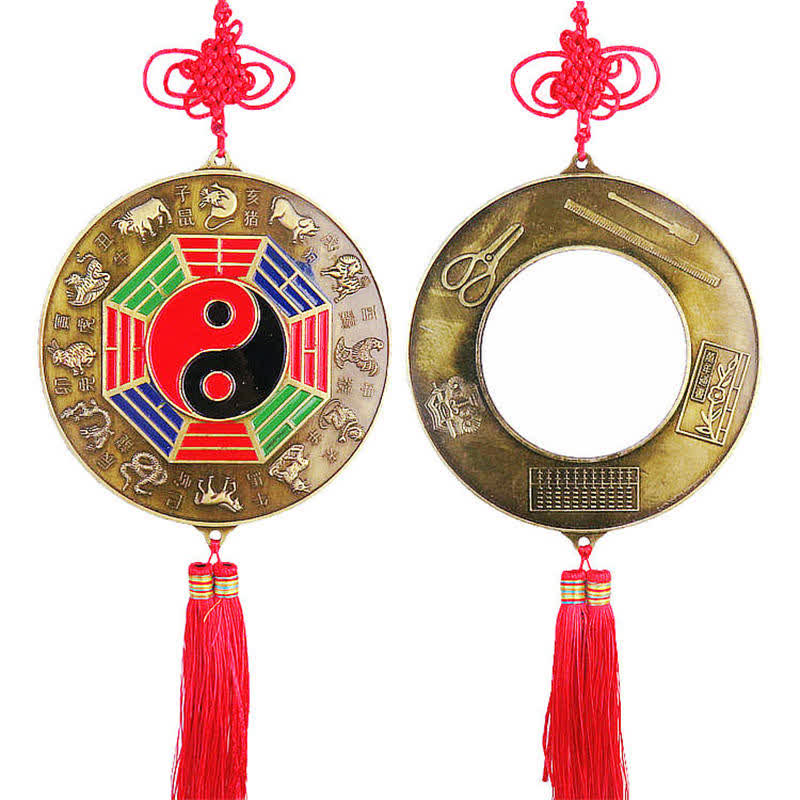
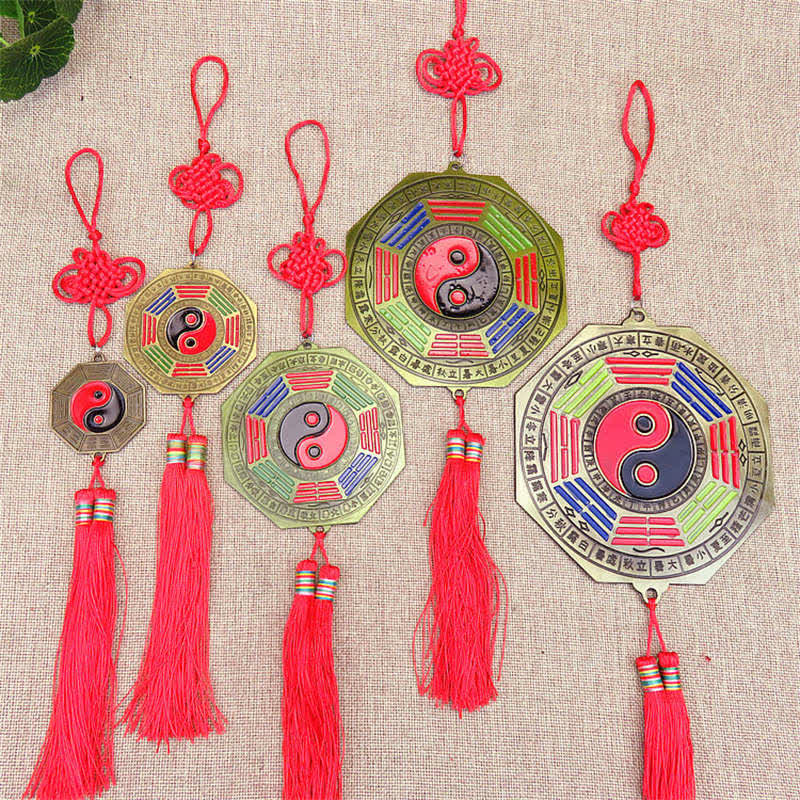
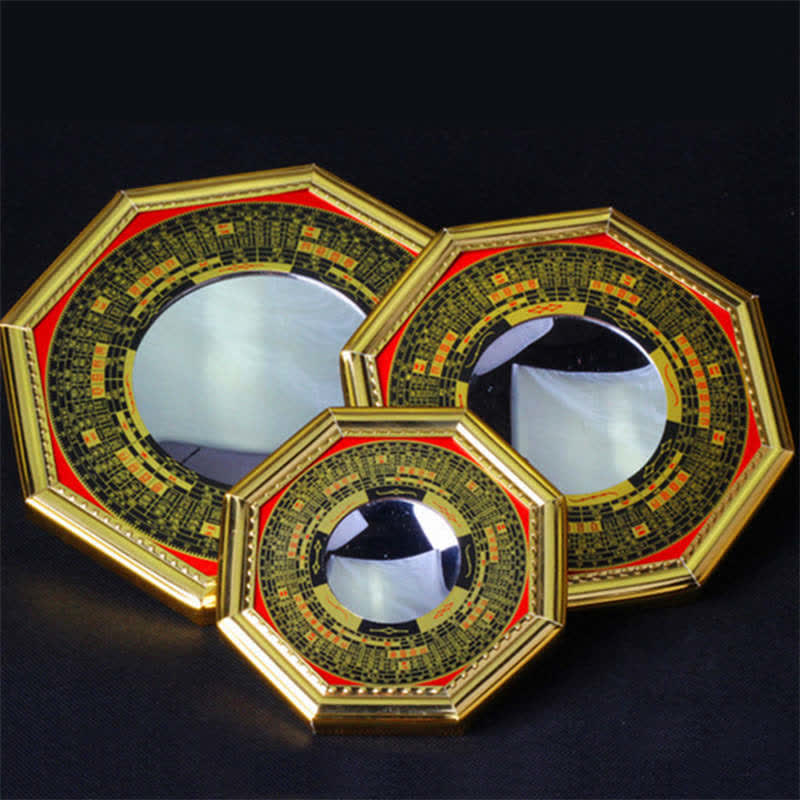
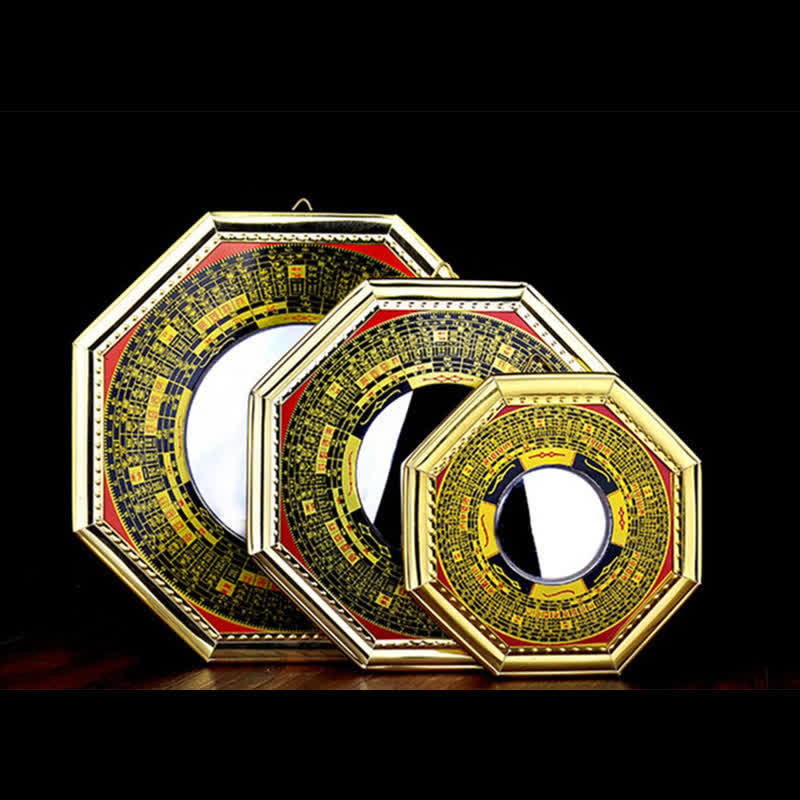
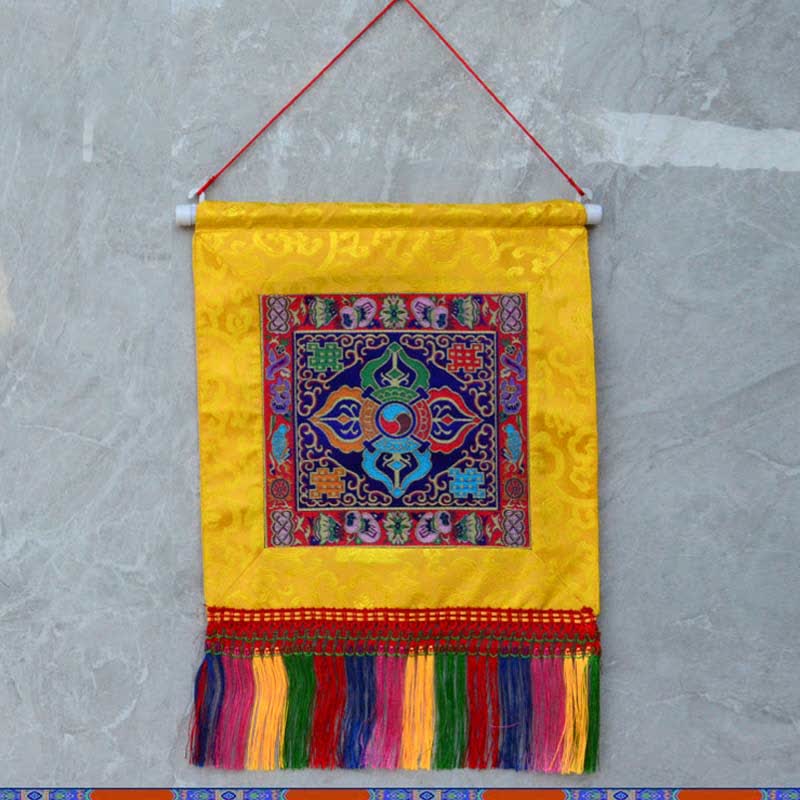
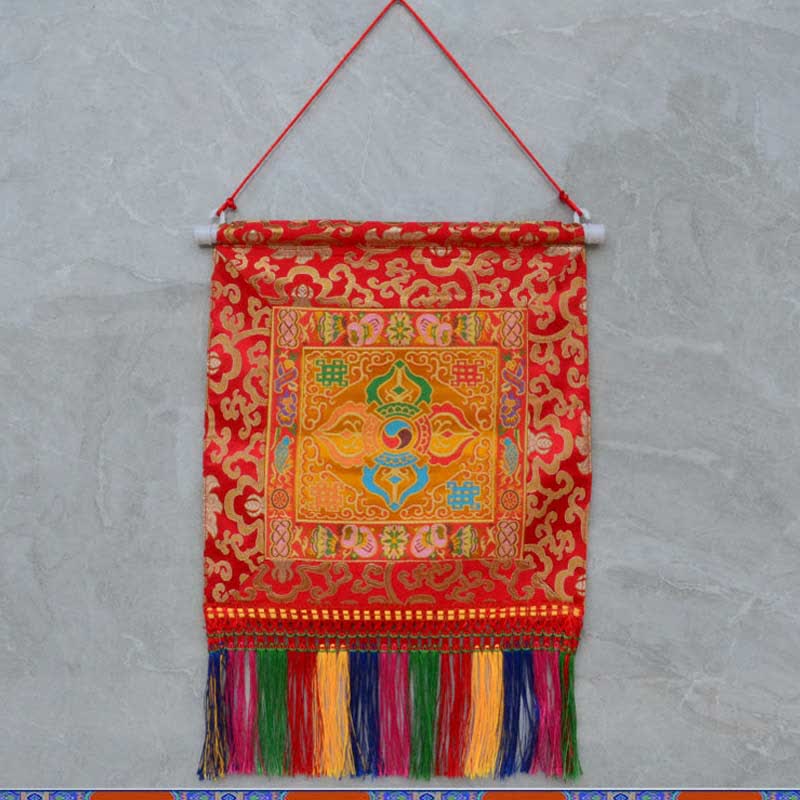

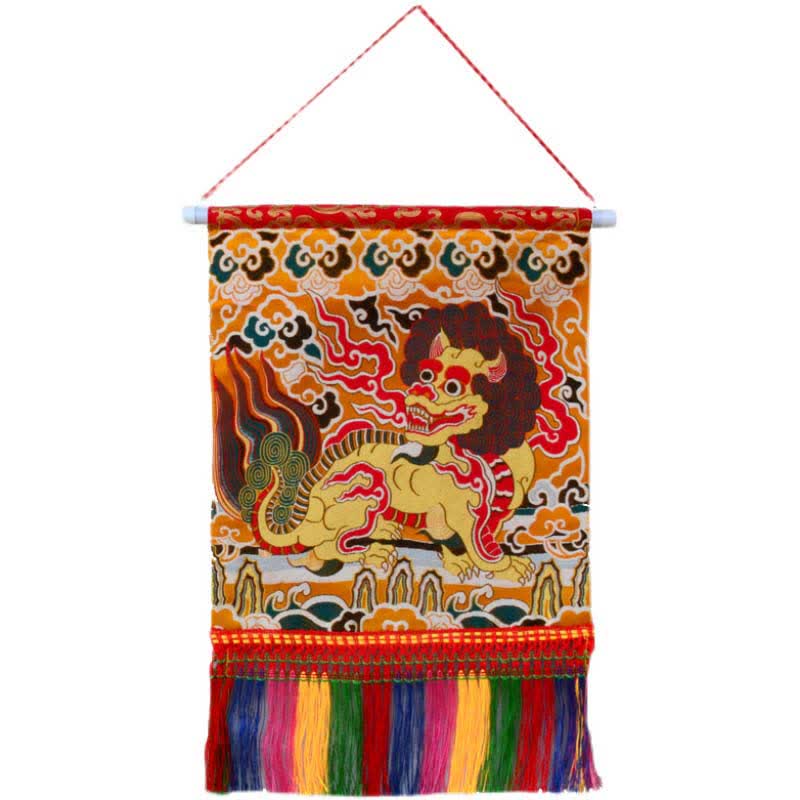
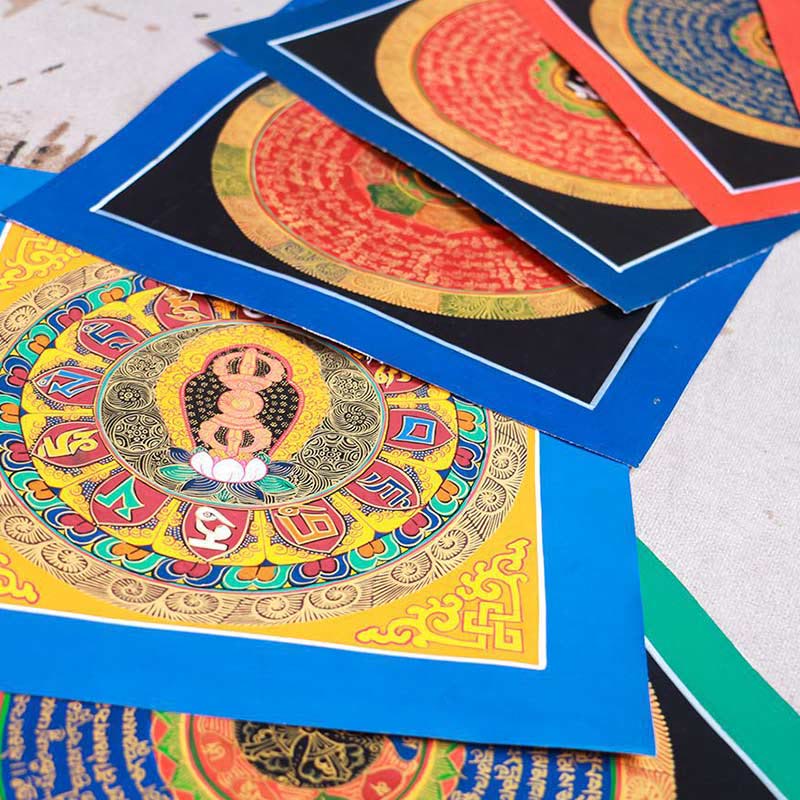
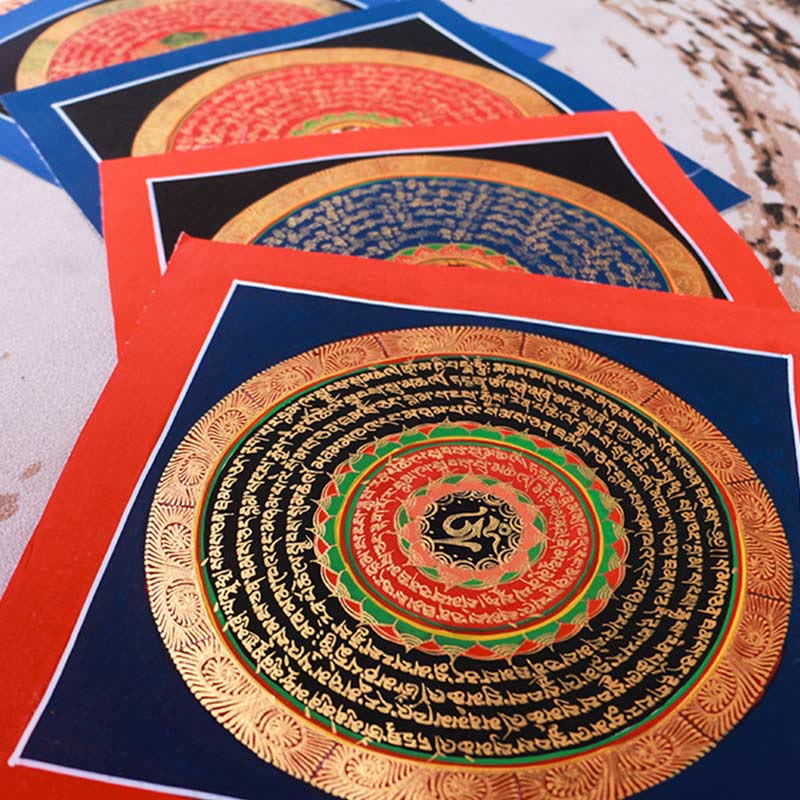
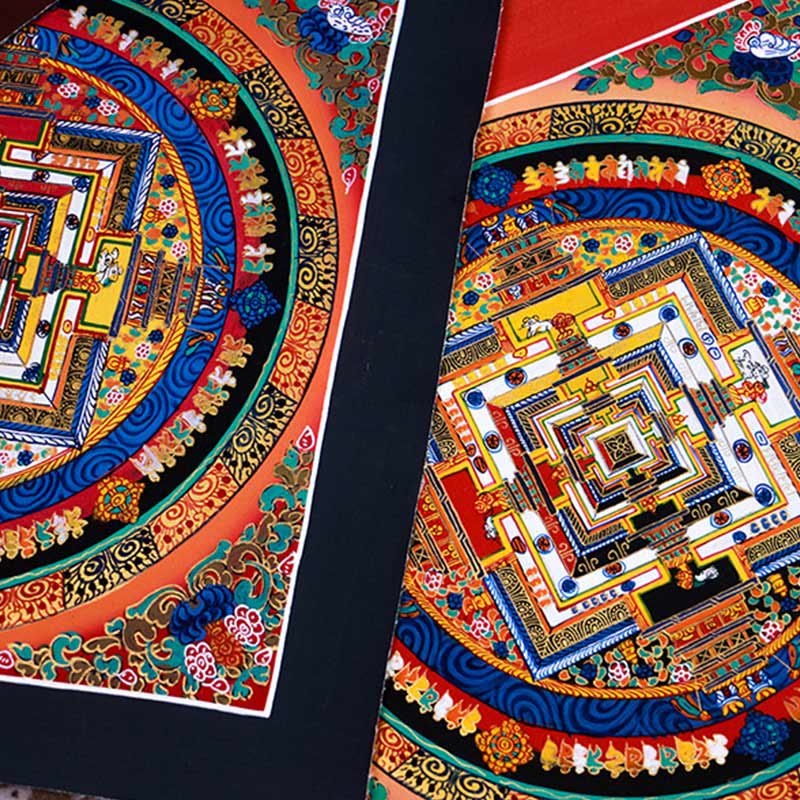
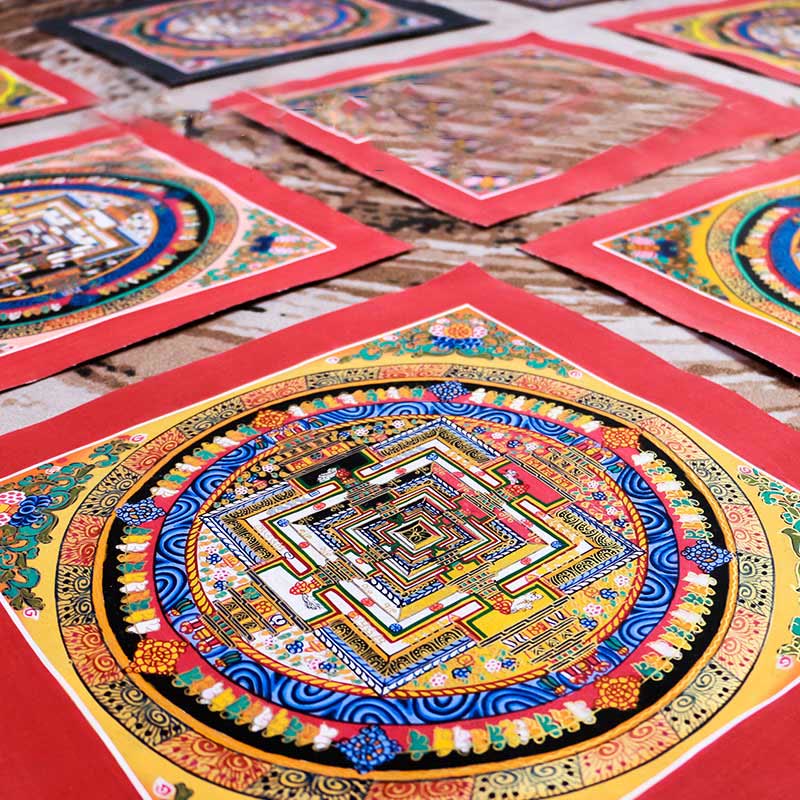
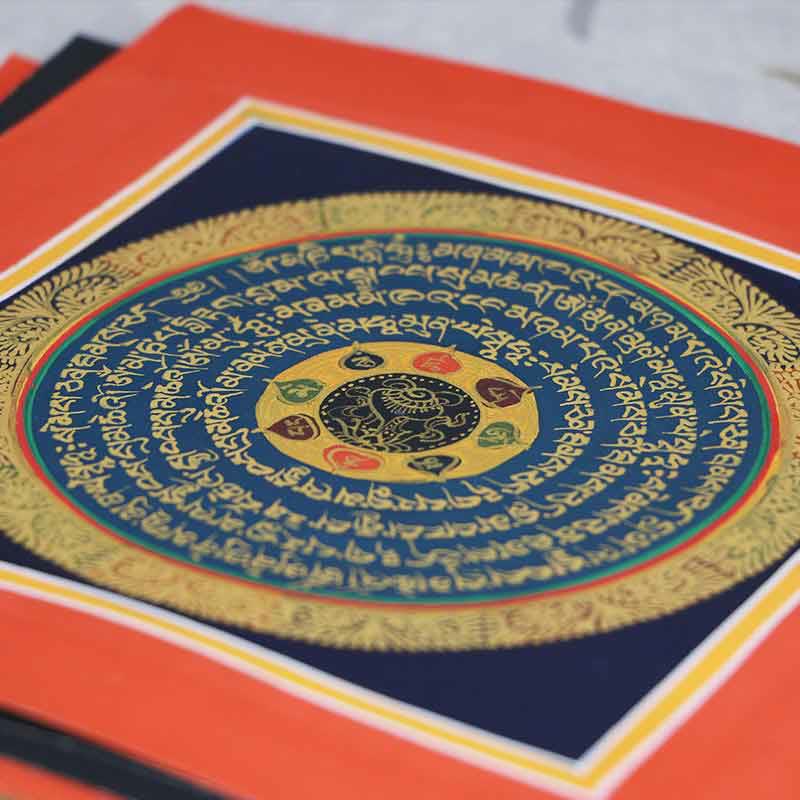
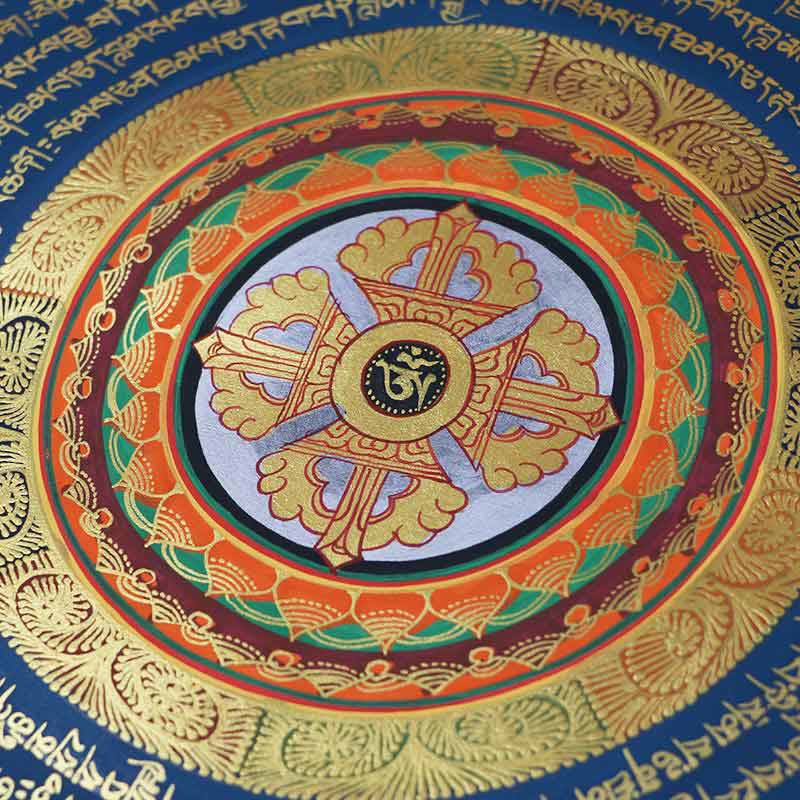
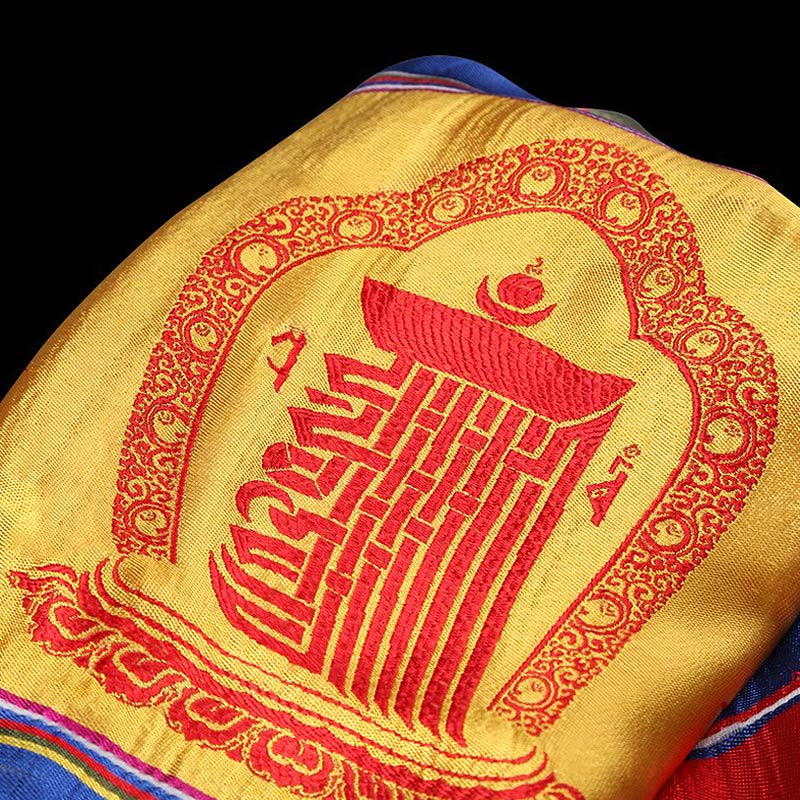
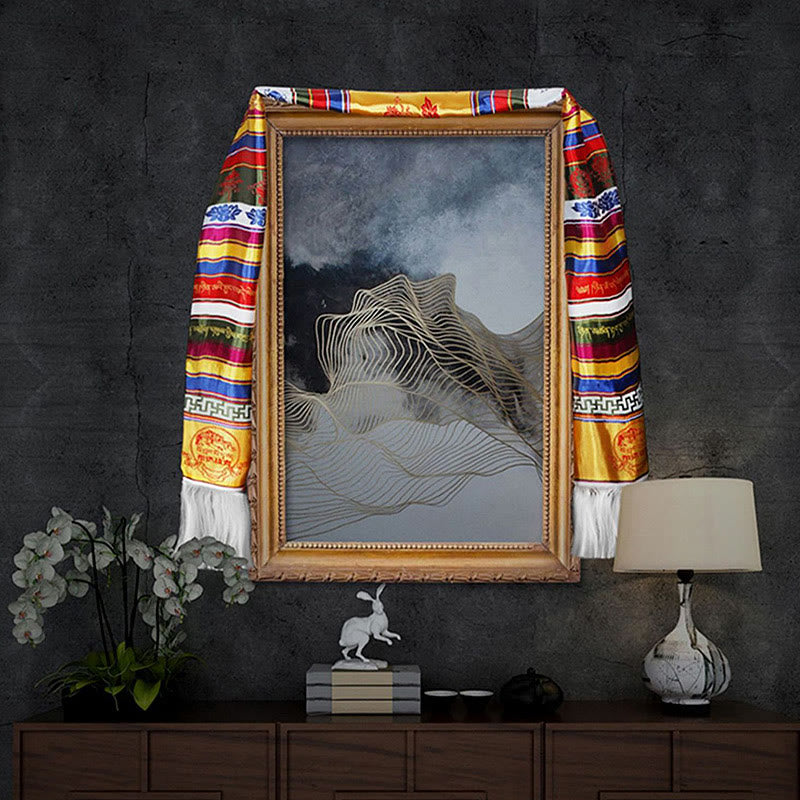
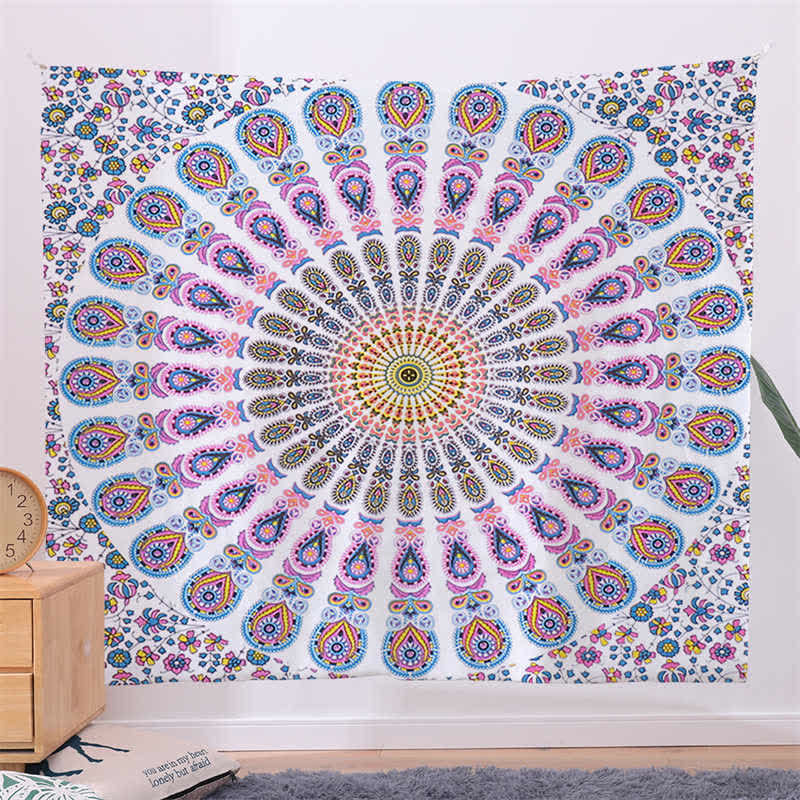
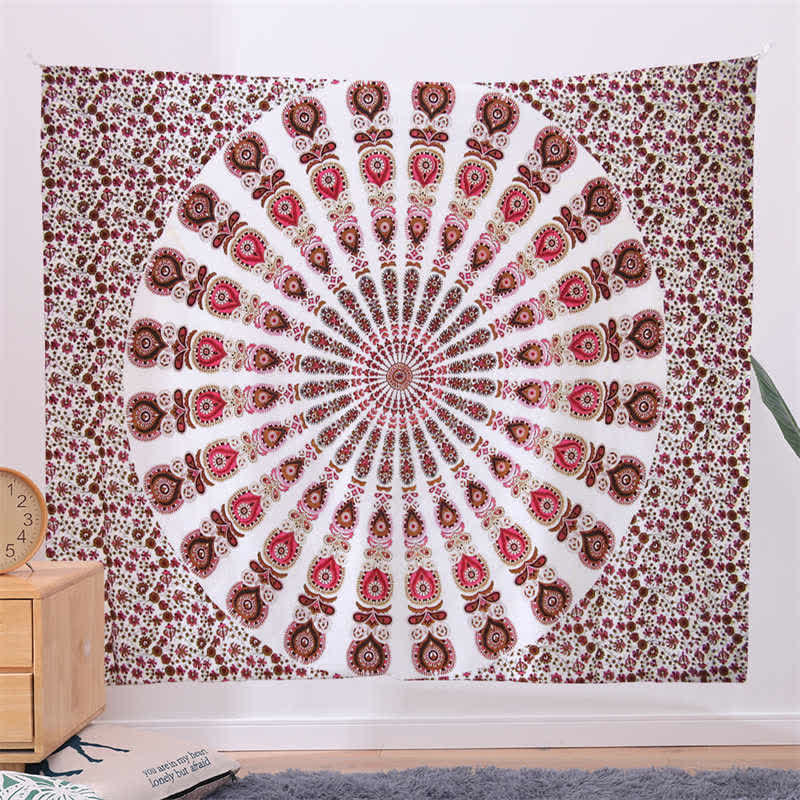
Bienvenue dans un univers où l'art transcende la simple décoration et devient un vecteur de paix, d'introspection et de profonde connexion spirituelle. Notre collection d' art mural et de tentures vous invite à explorer la beauté complexe et le pouvoir symbolique des motifs sacrés, avec un accent particulier sur les mandalas transformateurs qui peuvent transformer n'importe quelle pièce en un sanctuaire de sérénité.
Chez Healing Sounds, nous sommes convaincus que votre environnement influence profondément votre état intérieur. Cette sélection soigneusement sélectionnée offre bien plus qu'un simple attrait visuel : elle propose des outils de méditation, des points de convergence pour la définition de l'intention et des rappels constants de l'interdépendance de toutes choses. Découvrez des œuvres qui résonnent avec votre esprit et subliment votre espace grâce à des œuvres d'art pleines de sens.
Le charme éternel des mandalas
Les mandalas , symboles anciens du cosmos et du soi, captivent la conscience humaine depuis des millénaires. Issus des traditions spirituelles orientales, notamment de l'hindouisme et du bouddhisme, ces motifs géométriques complexes constituent de puissants supports visuels pour la méditation et la contemplation spirituelle. Le terme « mandala », dérivé du sanskrit, signifie « cercle », représentant la plénitude, l'unité et la nature cyclique de l'existence.
L'attrait universel des mandalas réside dans leur capacité à attirer l'attention, favorisant un sentiment de calme et de concentration. Chaque ligne, forme et couleur d'un mandala est chargée de sens, représentant souvent des concepts spirituels complexes, des divinités ou la structure même de l'univers. Utilisés comme décorations murales spirituelles , ils apportent ces énergies profondes dans votre intérieur, créant une atmosphère propice à la paix et à la réflexion.
Que vous cherchiez à approfondir votre pratique spirituelle ou souhaitiez simplement orner vos murs d'œuvres d'art qui parlent à votre âme, notre collection de mandalas offre un large éventail de motifs inspirants et réconfortants. Plus que de simples motifs, ce sont des cartes de conscience qui vous guident vers l'harmonie intérieure.
Explorer différentes expressions de l'art mural mandala
La beauté des mandalas s'exprime à travers une variété de techniques artistiques, chacune apportant une texture et une énergie uniques à ces symboles sacrés. Notre collection célèbre cette diversité en proposant de magnifiques décorations murales de mandalas conçues pour transformer vos espaces de vie ou de méditation. Des peintures vibrantes aux tentures aux détails complexes, chaque pièce témoigne de la puissance éternelle de cet art ancestral.
Les fascinantes peintures de mandalas constituent l'un des éléments phares de notre sélection. Ces œuvres présentent souvent une riche palette de couleurs et des détails minutieux, attirant le regard vers le point central et favorisant un regard méditatif. Les artistes qui créent ces œuvres s'engagent souvent eux-mêmes dans un processus méditatif, insufflant à leurs œuvres une intention concentrée et une énergie spirituelle. Vous y trouverez des représentations traditionnelles ainsi que des interprétations contemporaines mêlant symbolisme ancien et esthétique moderne.
Au-delà des peintures traditionnelles, les mandalas muraux peuvent prendre de nombreuses formes, comme des sculptures complexes, des tapisseries tissées et des motifs imprimés. Ces pièces peuvent servir de magnifiques pièces maîtresses dans une pièce, dégageant une aura de tranquillité et d'équilibre. La polyvalence des mandalas muraux leur permet de s'harmoniser avec différents styles d'intérieur, du minimaliste au bohème, en y ajoutant toujours une touche d'élégance spirituelle.
La signification des mandalas tibétains
Parmi les formes les plus vénérées figurent les mandalas tibétains , qui revêtent une signification profonde dans le bouddhisme vajrayana. Ce ne sont pas de simples créations artistiques, mais des cartes sacrées de paysages mentaux éveillés et de palais célestes. Traditionnellement, les mandalas tibétains sont utilisés comme outils de méditation par visualisation, guidant les pratiquants dans des voyages spirituels complexes.
Créer un mandala tibétain est un acte de dévotion et de profonde concentration, souvent entrepris par des moines pendant des semaines, voire des mois. Les détails complexes, les couleurs spécifiques et les figures symboliques sont tous prescrits par des textes anciens. Notre collection présente des œuvres inspirées de cette riche tradition, vous offrant un lien avec ces puissants outils spirituels et leur profond héritage.
La beauté éphémère des mandalas de sable
Bien qu'ils ne soient généralement pas disponibles sous forme de décorations murales permanentes dans leur forme originale, la tradition du mandala de sable nourrit profondément la compréhension spirituelle de tous les mandalas. Créées par des moines bouddhistes à partir de millions de grains de sable coloré, ces œuvres incroyablement détaillées sont minutieusement élaborées pendant des jours, voire des semaines, comme une pratique et une offrande spirituelles.
L'aspect le plus poignant d'un mandala de sable est son caractère éphémère. Une fois terminé, après cérémonies et contemplations, le motif complexe est démonté rituellement et le sable est souvent dispersé dans l'eau courante. Ce geste symbolise la nature éphémère de la vie et l'importance du détachement. Si notre œuvre murale offre une forme plus permanente, l'esprit du mandala de sable – son dévouement, sa précision et son symbolisme profond – résonne dans chaque œuvre conçue pour inspirer la contemplation.
Le symbolisme profond tissé dans chaque mandala
La force fondamentale d'un mandala réside dans son profond symbolisme. Chaque élément de son cercle est soigneusement choisi pour transmettre des vérités spirituelles complexes et des principes cosmiques. Comprendre ce symbolisme peut vous permettre d'approfondir votre appréciation de l'art mural mandala et de renforcer son impact sur votre espace personnel et votre pratique spirituelle.
Fondamentalement, le cercle représente la plénitude, l'éternité et l'interdépendance de toute vie . Le centre du mandala symbolise souvent le point de départ de la création, la source divine ou le soi éveillé. Les motifs rayonnant de ce centre peuvent représenter le déploiement de l'univers, le cheminement spirituel ou l'équilibre harmonieux de forces opposées.
De nombreux mandalas intègrent les principes de la géométrie sacrée dans l'art mural , utilisant des formes telles que des carrés (représentant le monde matériel et la stabilité), des triangles (symbolisant l'énergie, la direction et la trinité) et des cercles dans des cercles. Ces formes géométriques sont considérées comme les éléments fondamentaux du cosmos, et leur disposition dans un mandala crée une harmonie visuelle en résonance avec notre sens inné de l'ordre et de la beauté.
Les couleurs jouent également un rôle crucial dans la symbolique des mandalas. Par exemple, dans les traditions bouddhistes, le blanc peut représenter la pureté et la paix, le bleu la guérison et la sagesse, le rouge la passion et la force vitale, le vert la nature et l'équilibre, et le jaune l'intellect et le renoncement. Leurs significations spécifiques peuvent varier selon les traditions, mais l'utilisation intentionnelle de la couleur ajoute toujours une profondeur supplémentaire au mandala de guérison .
Parmi les motifs courants des mandalas , on trouve la fleur de lotus (symbolisant la pureté, l'éveil spirituel et l'illumination – un thème populaire dans la peinture des mandalas du lotus ), le vajra ou dorje (représentant l'indestructibilité et l'illumination foudroyante) et diverses divinités ou êtres éveillés, notamment dans les mandalas tibétains . Même les motifs abstraits peuvent évoquer des sentiments d'expansion, de contraction et le rythme de la vie.
Mandalas pour les espaces de méditation et de guérison
L'une des applications les plus puissantes des mandalas est leur utilisation comme points focaux pour la méditation et comme outils pour stimuler les énergies de guérison. Un mandala de guérison est spécifiquement conçu ou choisi pour sa capacité à favoriser l'équilibre, à réduire le stress et à favoriser le bien-être émotionnel et spirituel. Intégrer une telle œuvre d'art à votre intérieur peut le transformer en un véritable sanctuaire .
Utilisée en méditation, une œuvre d'art murale représentant un mandala peut contribuer à apaiser l'esprit et à améliorer la concentration. En contemplant doucement le centre du mandala et en laissant votre conscience s'étendre à travers ses motifs, vous pouvez entrer dans un état de concentration et de détente. Cette pratique peut conduire à une plus grande conscience de soi, à une libération émotionnelle et à un profond sentiment de paix. C'est pourquoi ces œuvres sont idéales pour les salles de méditation ou tout espace dédié à l'introspection et au calme.
Les motifs symétriques et harmonieux des mandalas apaisent naturellement le système nerveux. Dans un monde constamment stimulé, la nature prévisible et ordonnée d'un mandala offre un répit visuel et contribue à restaurer l'équilibre intérieur. C'est pourquoi la décoration des espaces de yoga est souvent ornée de mandalas, car ils complètent la pratique de l'union du corps, de l'esprit et de l'âme.
Choisir un mandala de guérison est un cheminement personnel. Vous pourriez être attiré par des couleurs spécifiques qui résonnent avec vos chakras ou vos intentions, ou peut-être qu'un symbole particulier, comme la Fleur de Vie, exprime votre désir d'interconnexion et d'harmonie universelle. La présence d'un mandala peut également servir de rappel constant et doux de votre cheminement spirituel et de votre engagement envers la croissance intérieure et la guérison.
Choisir sa décoration murale mandala pour une vie intentionnelle
Choisir un mandala mural pour votre intérieur est l'occasion de vous engager dans un aménagement intérieur réfléchi . Il ne s'agit pas seulement de combler un vide ; il s'agit de choisir consciemment des éléments qui reflètent vos valeurs, favorisent votre bien-être et contribuent à une atmosphère positive. Un mandala mural bien choisi peut devenir un élément précieux de votre quotidien, source d'inspiration et de lien.
Réfléchissez à l'intention qui sous-tend votre choix. Vous cherchez une œuvre d'art propice à la méditation ? Privilégiez des modèles avec un point focal clair et des couleurs apaisantes. Souhaitez-vous dynamiser un espace avec une énergie créative ? Un mandala coloré aux motifs dynamiques serait peut-être plus adapté. Pour ceux qui cherchent à cultiver un sentiment de paix et de protection, les mandalas intégrant des symboles traditionnels comme le lotus ou des motifs protecteurs spécifiques peuvent être très puissants.
L'emplacement de votre mandala mural est également important. Bien placé dans votre salon, il peut être un sujet de conversation et une source de sérénité partagée. Dans une chambre, il favorise un sommeil réparateur et des rêves paisibles. Dans un bureau ou un espace de travail, il favorise la concentration et la clarté. La polyvalence des mandalas muraux géométriques leur permet de s'intégrer harmonieusement à divers environnements, rehaussant ainsi une décoration intérieure pleine d'énergie .
Pensez aux matériaux et au savoir-faire. Un mandala peint à la main véhicule l'énergie unique de l'artiste, tandis qu'une tapisserie tissée apporte texture et chaleur. Tenez compte de l'échelle de l'œuvre par rapport à votre espace. Un grand mandala imposant peut créer un point focal saisissant, tandis qu'une œuvre plus petite et plus intime sera parfaite pour un autel personnel ou un coin méditation.
L'engagement de Healing Sounds envers l'art spirituel authentique
Chez Healing Sounds, notre collection d' art mural et de tentures , et plus particulièrement nos mandalas , est conçue avec un profond respect des traditions spirituelles et de l'intégrité artistique de chaque pièce. Nous comprenons qu'il ne s'agit pas de simples objets décoratifs, mais de puissants symboles capables d'inspirer et de guérir. Notre engagement est de vous offrir des œuvres d'art authentiques et de haute qualité, en résonance avec la voix bienveillante et experte de notre marque.
Nous nous efforçons de sélectionner des pièces réalisées avec soin et attention, qu'il s'agisse de mandalas tibétains traditionnels, de peintures de mandalas contemporaines ou d'autres formes de décoration murale spirituelle . Nous croyons au pouvoir de l'art de transformer les espaces et les vies, et cette philosophie guide notre processus de sélection. Notre objectif est de vous aider à créer un havre de paix intérieur qui nourrit véritablement votre esprit.
Au-delà de l'esthétique, nous mettons l'accent sur les qualités énergétiques des œuvres d'art que nous proposons. Chaque mandala de guérison de notre collection est choisi pour sa capacité à contribuer à un environnement harmonieux et stimulant. Nous sommes convaincus qu'en s'entourant d'objets de beauté et de signification spirituelle, on peut cultiver un plus grand sentiment de paix, de bien-être et de connexion au sacré au quotidien. Notre collection est en constante évolution, reflétant notre engagement à vous proposer des mandalas et des œuvres d'art spirituels inspirants et riches de sens.
Découvrez nos collections de décorations murales sacrées
Plongez au cœur de l'univers des ornements spirituels et symboliques pour vos espaces sacrés. Au-delà de notre gamme variée de mandalas, nous vous invitons à découvrir d'autres pièces uniques qui rehausseront l'énergie et l'esthétique de votre intérieur ou de votre espace de méditation :
- Tapisserie Mandala : Découvrez de grandes tapisseries fluides aux motifs mandalas complexes, parfaites pour apporter une touche bohème et spirituelle à n'importe quelle pièce. Ces créations textiles offrent une manière douce et généreuse d'exprimer la géométrie sacrée.
- Thangka : Découvrez les peintures sur rouleaux bouddhistes tibétaines traditionnelles, appelées Thangkas. Ces œuvres détaillées représentent des divinités, des scènes spirituelles ou des mandalas, et constituent des outils importants pour la méditation et l'enseignement dans la culture tibétaine.
- Drapeaux de prière tibétains : Découvrez d'authentiques drapeaux de prière tibétains, traditionnellement suspendus pour répandre la paix, la compassion, la force et la sagesse. Le vent porte les bénédictions et les prières qu'ils contiennent à tous les êtres.
- Miroirs Bagua : Découvrez et procurez-vous des miroirs Bagua, un outil Feng Shui utilisé pour protéger une maison ou une entreprise en déviant les énergies négatives. Ces miroirs arborent généralement les huit trigrammes du Bagua.
- Cartes Bagua : Découvrez la carte Bagua, une carte énergétique Feng Shui essentielle utilisée pour analyser et améliorer la circulation énergétique dans un espace. Ces pages offrent un aperçu de l'application de cette pratique ancestrale.
Chacune de ces collections offre des moyens uniques d’apporter intention, beauté et résonance spirituelle dans votre environnement, complétant l’énergie profonde de nos offres de mandalas .
Adoptez le pouvoir transformateur de l'art sacré et laissez notre collection d'art mural et de tentures , riche en mandalas chargés de sens, inspirer une connexion plus profonde avec votre moi intérieur et l'univers qui vous entoure. Créez un espace non seulement magnifique, mais aussi empreint de paix, d'harmonie et de vitalité spirituelle.
Questions fréquemment posées sur les mandalas et l'art mural spirituel
Le mot « mandala » (मण्डल) vient du sanskrit , une ancienne langue indo-aryenne de l'Inde. Il signifie littéralement « cercle » ou « objet discoïde ». Cependant, sa signification dépasse la simple forme et englobe des concepts tels que « enceinte sacrée », « essence », « achèvement » ou « point de rassemblement », reflétant ainsi sa signification spirituelle en tant que symbole de la plénitude et du cosmos.
Les mandalas sont riches en symboles, représentant principalement la plénitude, l'unité et le cosmos . Ils servent d'outils spirituels pour faciliter la méditation, symbolisent le cheminement spirituel et illustrent la structure de l'univers. Le centre symbolise souvent le divin ou l'être éveillé, tandis que les motifs rayonnant vers l'extérieur symbolisent l'interdépendance de toutes choses et l'équilibre des énergies universelles.
Le symbolisme spécifique peut varier considérablement selon la tradition culturelle (par exemple, hindoue, bouddhiste) et les éléments particuliers du motif, tels que les couleurs, les formes géométriques (comme les décorations murales de géométrie sacrée ) et les figures emblématiques. En fin de compte, un mandala est une représentation visuelle d'un espace sacré, conçue pour faciliter la réflexion intérieure et la connexion à une conscience supérieure.
Dans le bouddhisme, et plus particulièrement dans le bouddhisme vajrayana (tibétain), un mandala est un symbole spirituel profond représentant un paysage mental éveillé ou le palais céleste d'un bouddha ou d'un bodhisattva. Il sert de diagramme sacré utilisé dans les pratiques de méditation complexes pour guider les pratiquants vers l'éveil. Chaque détail, de la divinité centrale à l'architecture et aux symboles environnants, est une représentation précise des vérités spirituelles et des aspects de la voie de l'éveil.
Les mandalas tibétains sont souvent utilisés pour la visualisation, aidant le méditant à pénétrer mentalement dans le mandala, à s'identifier à la divinité centrale et à cultiver les qualités de l'éveil. Ils symbolisent l'univers pur et parfait et la nature de bouddha inhérente à chaque être. La création et la contemplation d'un mandala sont considérées comme des actes de mérite spirituel et de purification.
Bien que les mandalas apparaissent sous de nombreuses formes, trois types sont généralement distingués, en particulier dans les traditions bouddhistes :
- Mandalas pédagogiques : Ces mandalas sont symboliques, chaque forme, ligne et couleur représentant différents aspects d'un système philosophique ou religieux. L'apprenant crée son propre mandala en fonction de sa compréhension de ces enseignements.
- Mandalas de guérison : Plus intuitifs, ils sont créés pour favoriser la méditation, inviter à la sagesse, évoquer le calme et canaliser la concentration. Notre collection de mandalas de guérison met l'accent sur cet aspect.
- Mandalas de sable : Principalement associés au bouddhisme tibétain, ces diagrammes complexes réalisés à partir de sable coloré sont une pratique et un rituel spirituels, symbolisant l'impermanence, car ils sont démantelés une fois terminés.
Il est important de noter que les catégorisations peuvent varier et que de nombreux mandalas peuvent intégrer des éléments de différents « types ». Par exemple, une peinture de mandala peut être à la fois un outil pédagogique et thérapeutique.
Les mandalas muraux sont particulièrement adaptés aux espaces de méditation grâce à leurs qualités intrinsèques favorisant la concentration et le calme intérieur. Leurs motifs symétriques et harmonieux attirent naturellement le regard vers l'intérieur, contribuant à apaiser l'esprit et à réduire les distractions. Leurs motifs complexes offrent un point de concentration, favorisant des pratiques comme le trataka (méditation du regard fixe).
De plus, la nature symbolique des mandalas imprègne l'espace de méditation d'énergie et d'intention spirituelles. Représentations visuelles de la plénitude, de l'équilibre et du sacré, ils créent une atmosphère propice à la réflexion profonde et à la connexion. Un mandala de guérison , en particulier, peut renforcer la vocation de l'espace comme sanctuaire de paix et de ressourcement, ce qui en fait une œuvre d'art idéale pour les salles de méditation .
Si le terme « mandala » trouve ses racines dans les traditions orientales comme l'hindouisme et le bouddhisme, on retrouve des motifs circulaires et concentriques similaires, porteurs d'une signification spirituelle, dans l'art et l'architecture chrétiens. Ces motifs ne sont généralement pas appelés mandalas par les chrétiens, mais présentent des similitudes fonctionnelles et symboliques. On peut citer à titre d'exemple les rosaces des cathédrales gothiques, qui présentent des motifs complexes partant d'un point central, représentant souvent des scènes bibliques ou des saints.
Les nœuds celtiques et les mandorles (auréoles en amande entourant des figures comme le Christ ou la Vierge Marie) présentent également des motifs symétriques et précis qui peuvent guider la contemplation. Certaines pratiques contemplatives chrétiennes contemporaines peuvent intégrer la création ou la coloration de mandalas comme outil de méditation, s'inspirant des principes universels de l'art circulaire sacré. Cependant, ce n'est pas un élément traditionnel ou répandu de la doctrine ou de la liturgie chrétiennes, contrairement aux mandalas dans les religions orientales.
Explorez notre collection complète de décoration et de maison pour plus d'inspiration.






